Harta are straturi; selectați ziua din colțul din stânga sus // The map has layers; select the day from the upper left corner
Ziua a 3-a din această excursie cu baza în Mila 23 am început-o pe întuneric. Am plecat pe lacul Rădăcinos pentru a vedea răsăritul, și ne-au așteptat gazdele noastre din Deltă, pelicanii.
Day 3 of this trip with our base in Mila 23 started in the dark. We left for Lake Rădăcinos to see the sunrise, and our hosts in the Delta, the pelicans, awaited us.

Pe măsură ce soarele s-a ridicat deasupra liniei orizontului, s-a reflectat în oglinda încă întunecată a Dunării luând forma unui "i" perfect; între timp, cerul și apa, de un portocaliu aproape poetic, au început să se distingă, iar noaptea s-a făcut zi.
As the sun rose above the horizon, it reflected in the still dark mirror of the Danube, forming a perfect "i"; meanwhile, the sky and water, in an almost poetic orange, began to distinguish themselves, and night turned into day.
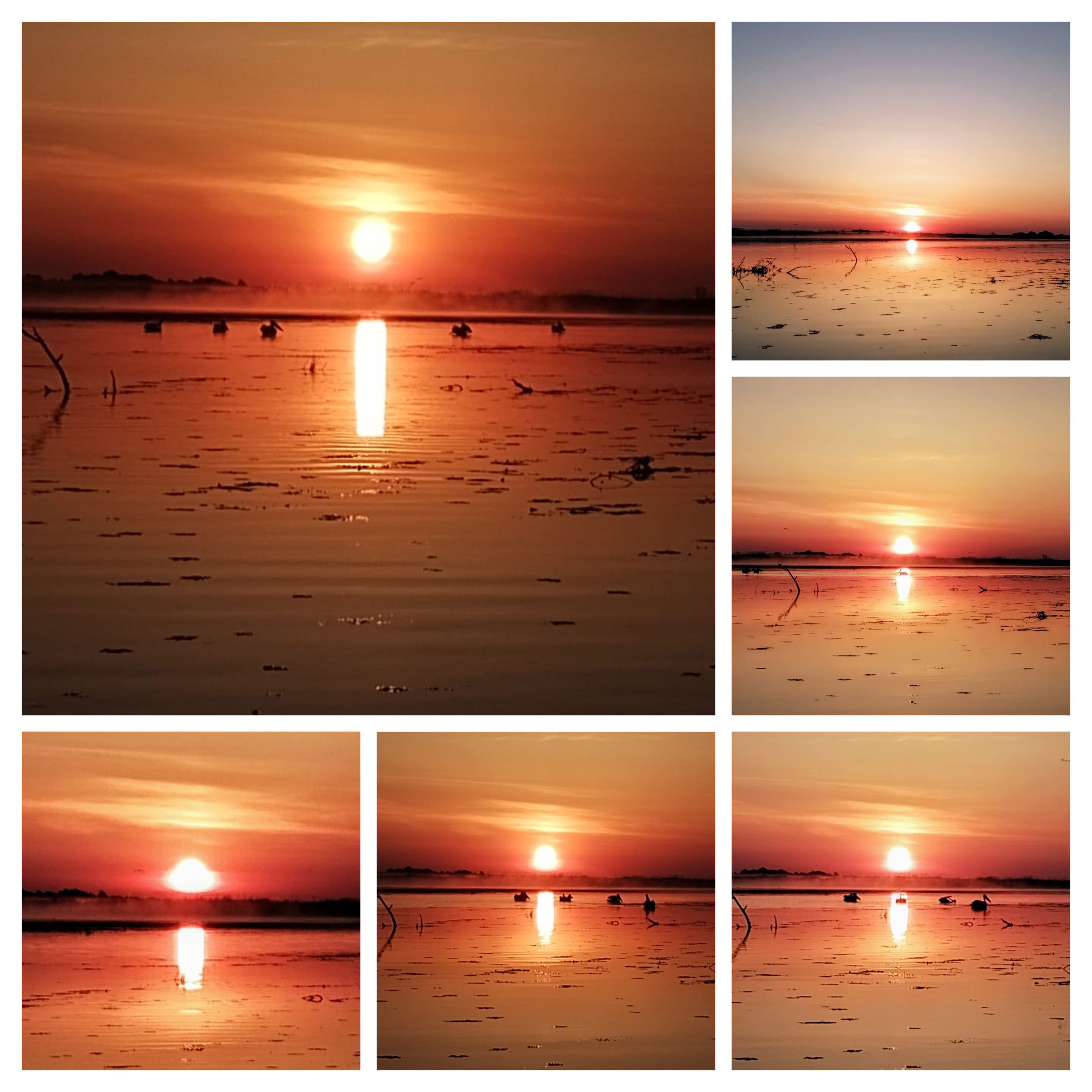
Răsăritul magic în Deltă // The magic sunrise in the Delta
Înapoi în Mila 23, ceața care ne-a învăluit ieri se face simțită și azi. Azi va fi oricum o zi de poveste, deci cum altfel să o începem?
Back in Mila 23, the fog that enveloped us yesterday is seen again today. Today will surely be another fairy-tale day, so how else could we start it?
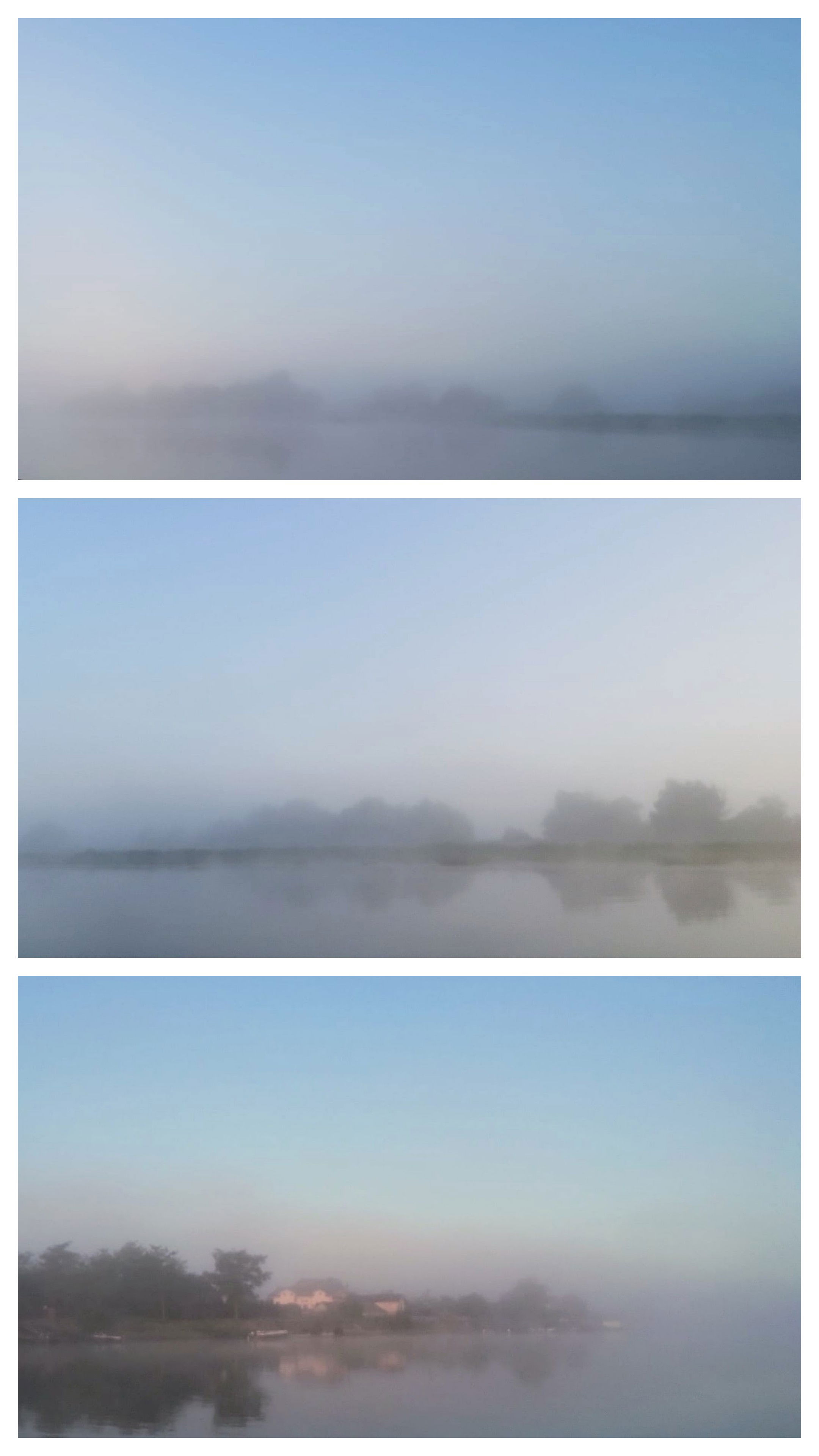
Ne-am întors la cazare1 pentru micul dejun. Nu numai noi am luat micul dejun, ci și pisicile care domină satul Mila 23 - sub privirile atente ale tatălui, noua generație de mâțe prinde și consumă un șarpe de grădină.
1. https://tinyurl.com/3zr4tkhp
We returned to our accommodation1 for breakfast. Not only we had breakfast, but also the cats that dominate the village of Mila 23 - under the watchful eye of the father, the new generation of kittens catches and consumes a garden snake.
1. https://tinyurl.com/3zr4tkhp
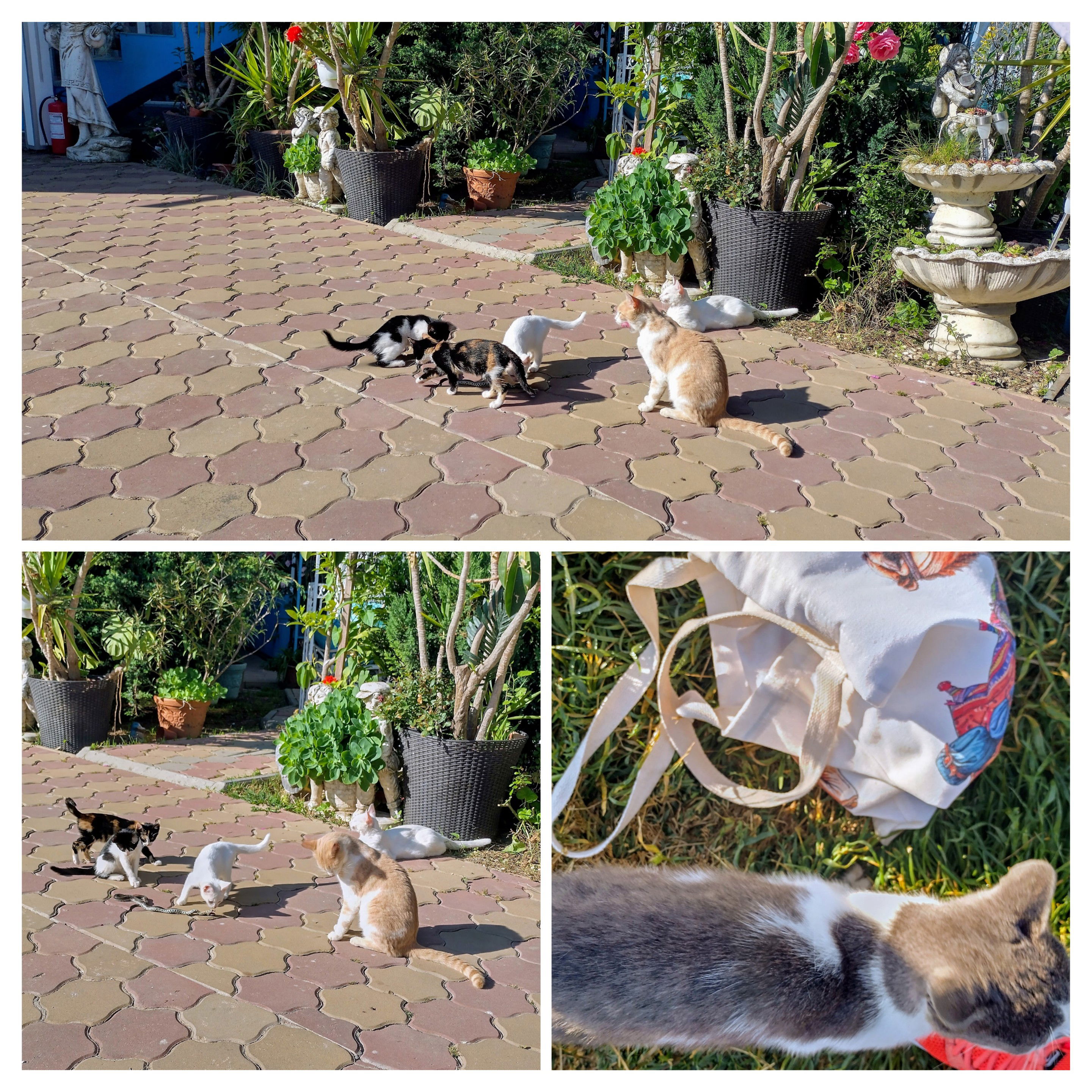
Pisici în Mila 23 // Cats in Mila 23
După masă, așteptând ora de plecare către Letea, am făcut o plimbare în stânga satului, unde ne-a surprins roua dimineții.
After breakfast, waiting for the departure time to Letea, we took a walk to the left of the village, where we were surprised by the morning dew.
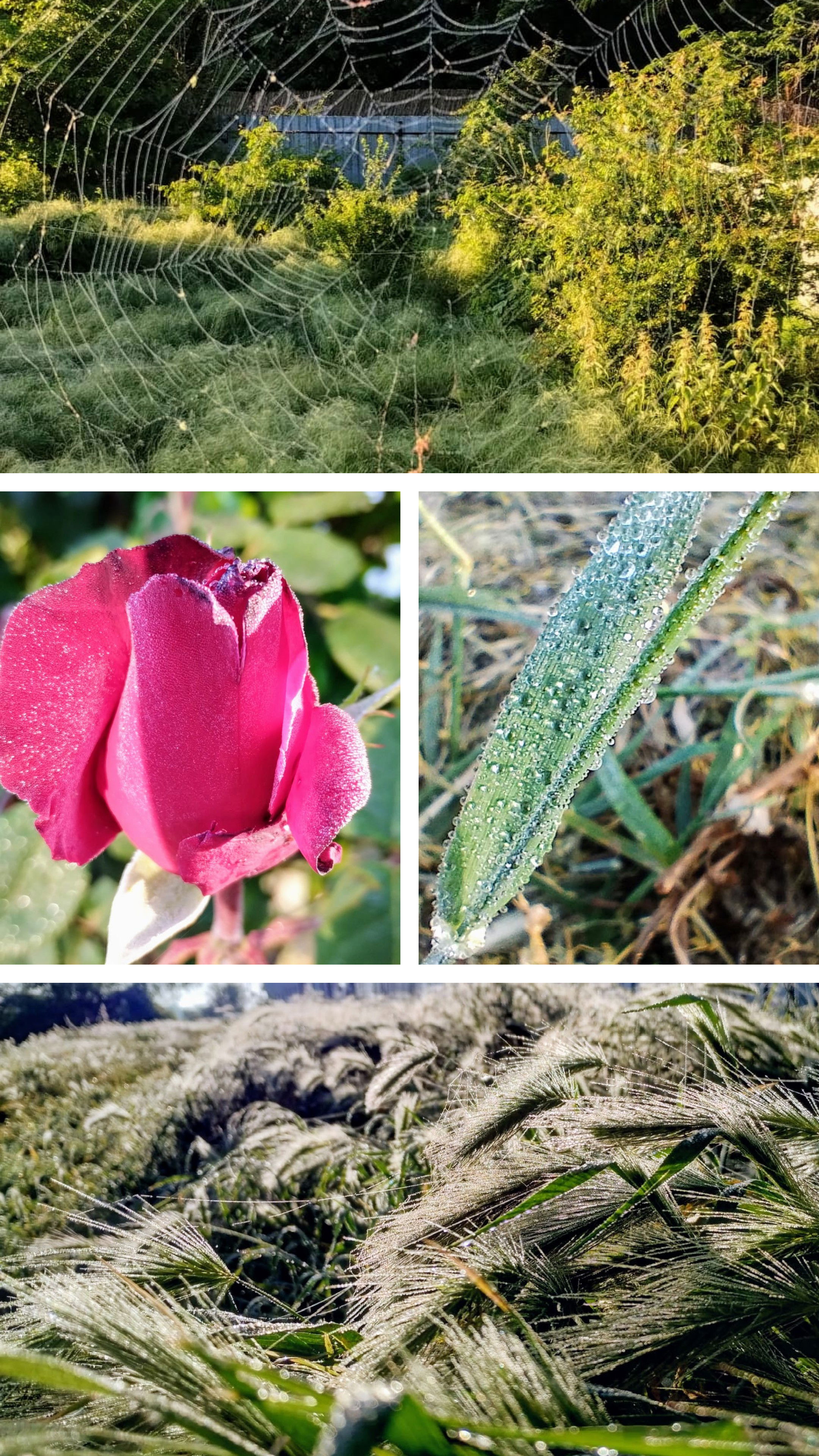
În excursia la Letea am plecat pe un drum deja cunoscut: C. Eracle - C. Brațliva - L. Rădăcinos - L. Trei Iezere.
For the trip to Letea, we set out on a familiar route: C. Eracle - C. Brațliva - L. Rădăcinos - L. Trei Iezere.
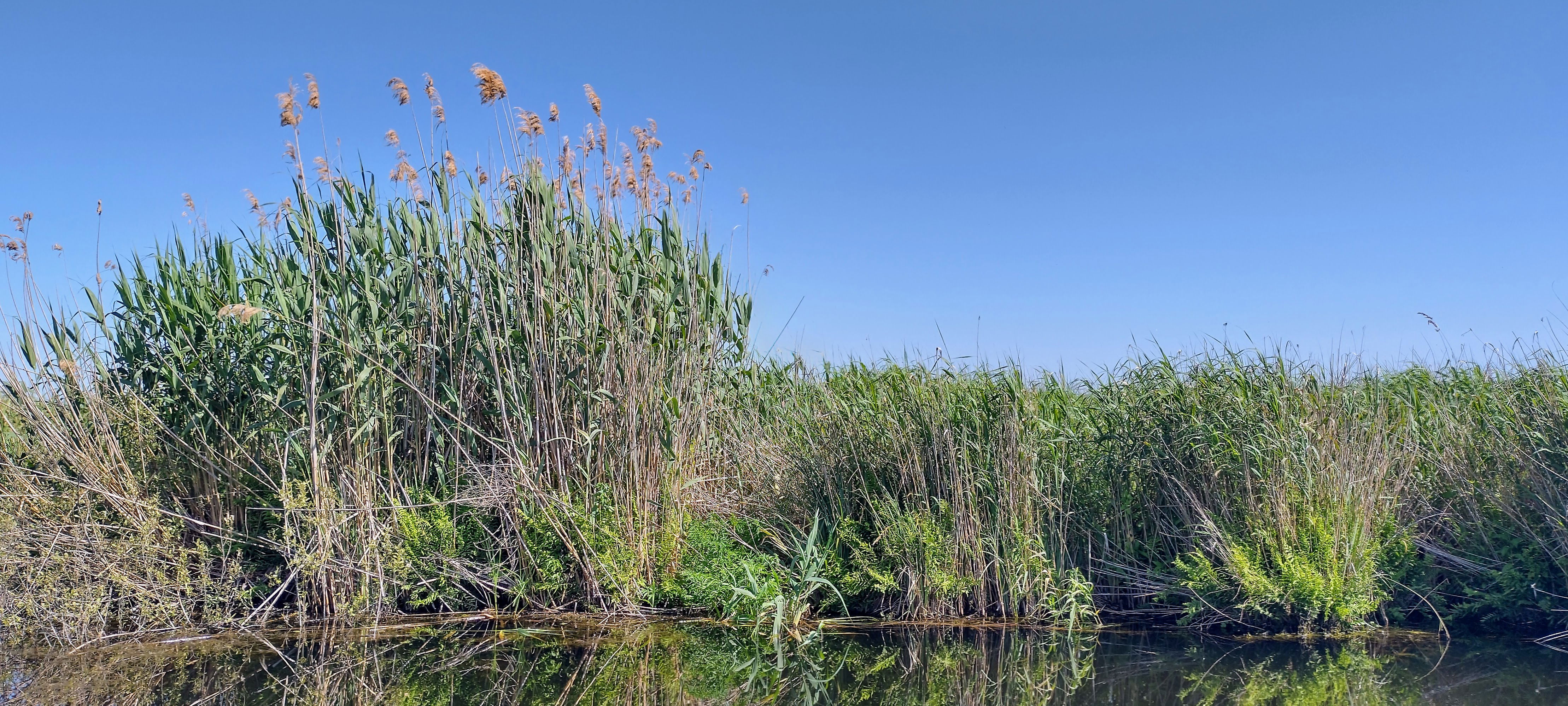
Canalul Eracle // The Eracle Canal
Pe lacul Trei Iezere am văzut un lebădoi înfoiat, ca să ne sperie - l-am lăsat să creadă că a reușit, și ne-am continuat drumul înapoi pe canalul Eracle, până la lacul Miazăzi unde, iarăși, am surprins pelicanii la masă - ca să prindă mai mult pește, pelicanii pedalează intens în cerc, strâgând peștii între ei.
On Lake Trei Iezere, we saw a puffed-up swan trying to scare us - we let it think it succeeded, and we continued our journey back on the Eracle canal to Lake Miazăzi where, again, we caught the pelicans having breakfast - to catch more fish, the pelicans pedal intensely in a ring formation, gathering the fish inside the circle.
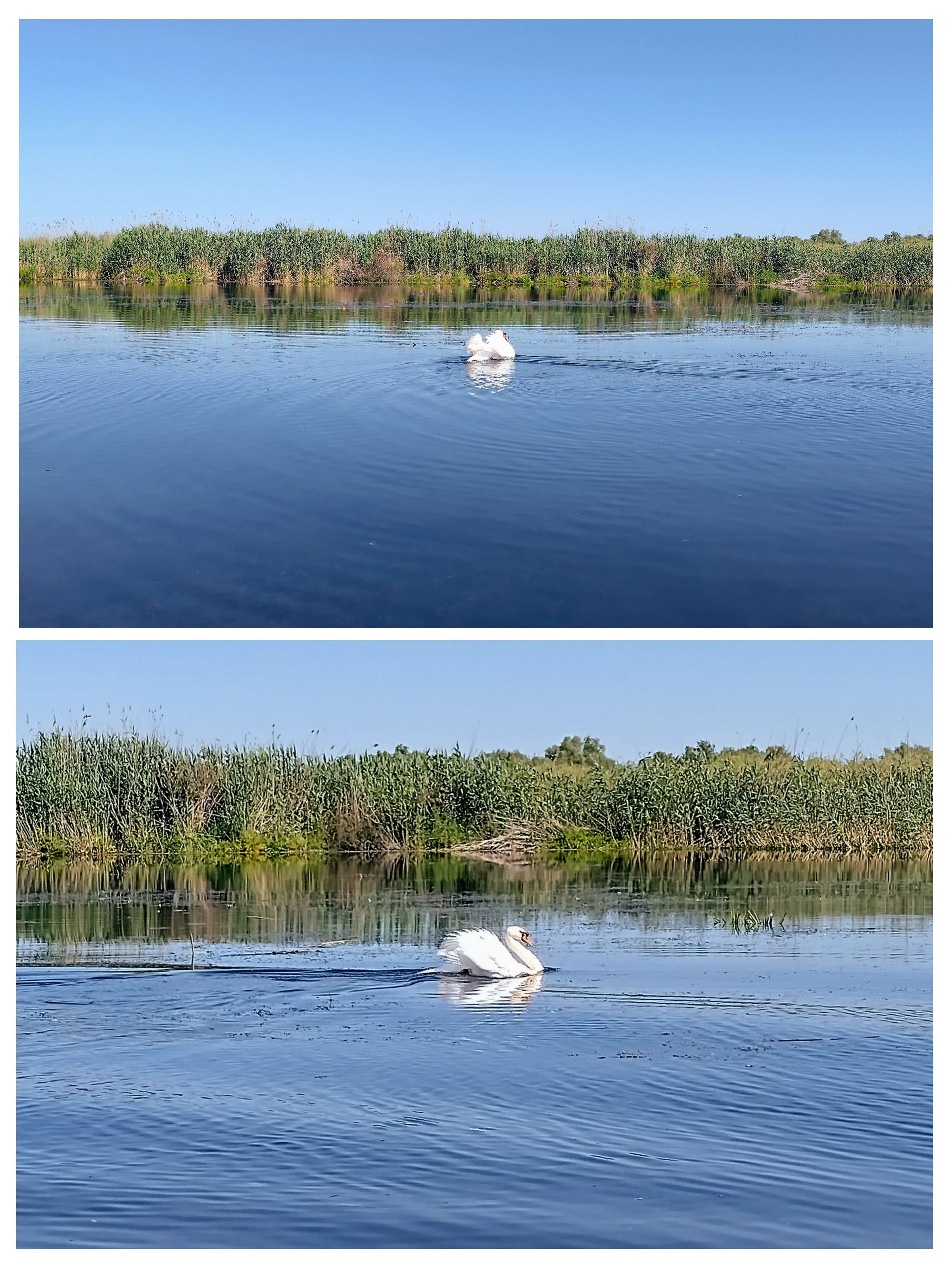
Lebădă pe lacul Trei Iezere // Swan on the Trei Iezere Lake

Adăpost pescăresc cu hotel plutitor pe canalul Eracle, sau La Nea Simion // Fishing shelter with floating hotel on the Eracle Canal, or At Nea Simion
Pelicani la micul dejun pe lacul Miazăzi // Pelicans at breakfast on Lake Miazăzi
Începând cu lacul Miazăzi, a urmat o serie de lacuri pe care nu mai fusesem, continuând cu lacul Lungu și japșa Vastosnia care se hrănește din el. Aici ne-am reîntâlnit cu nuferii.
japșă, japșe, s. f. Depresiune de mică adâncime din bălțile sau din Delta Dunării, cu contur circular sau alungit, acoperită de apă numai în timpul revărsărilor, în care se dezvoltă o bogată vegetație de apă. cf. rus. jepotina
Starting with the Miazăzi Lake, followed a series of lakes we hadn't been on before, continuing with Lake Lungu and the Vastosnia backwaters, which feed from it. Here, we re-encountered the water lilies.

Nuferi pe lacul Lungu // Water lilies on Lake Lungu
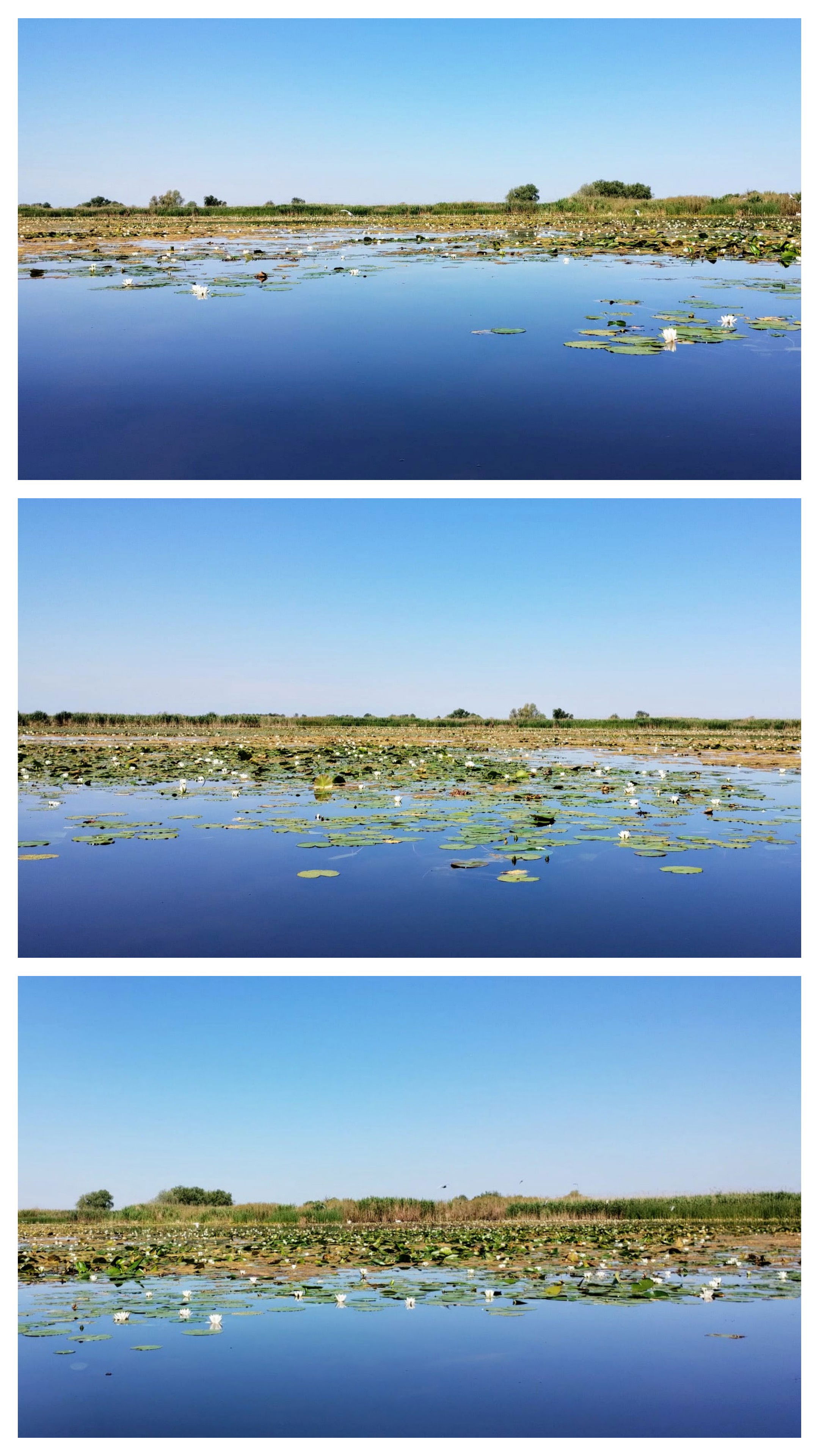
Nuferi pe japșa Vastosnia // Water lilies on the Vastosnia backwaters
Am ocolit apoi lacul Matița și lacul Merhei pe partea lor dreaptă. Între cele două, am navigat pe canalul Suez (sic!).
We then circled Lake Matița and Lake Merhei on their right side. Between the two, we navigated the Suez Canal (sic!).
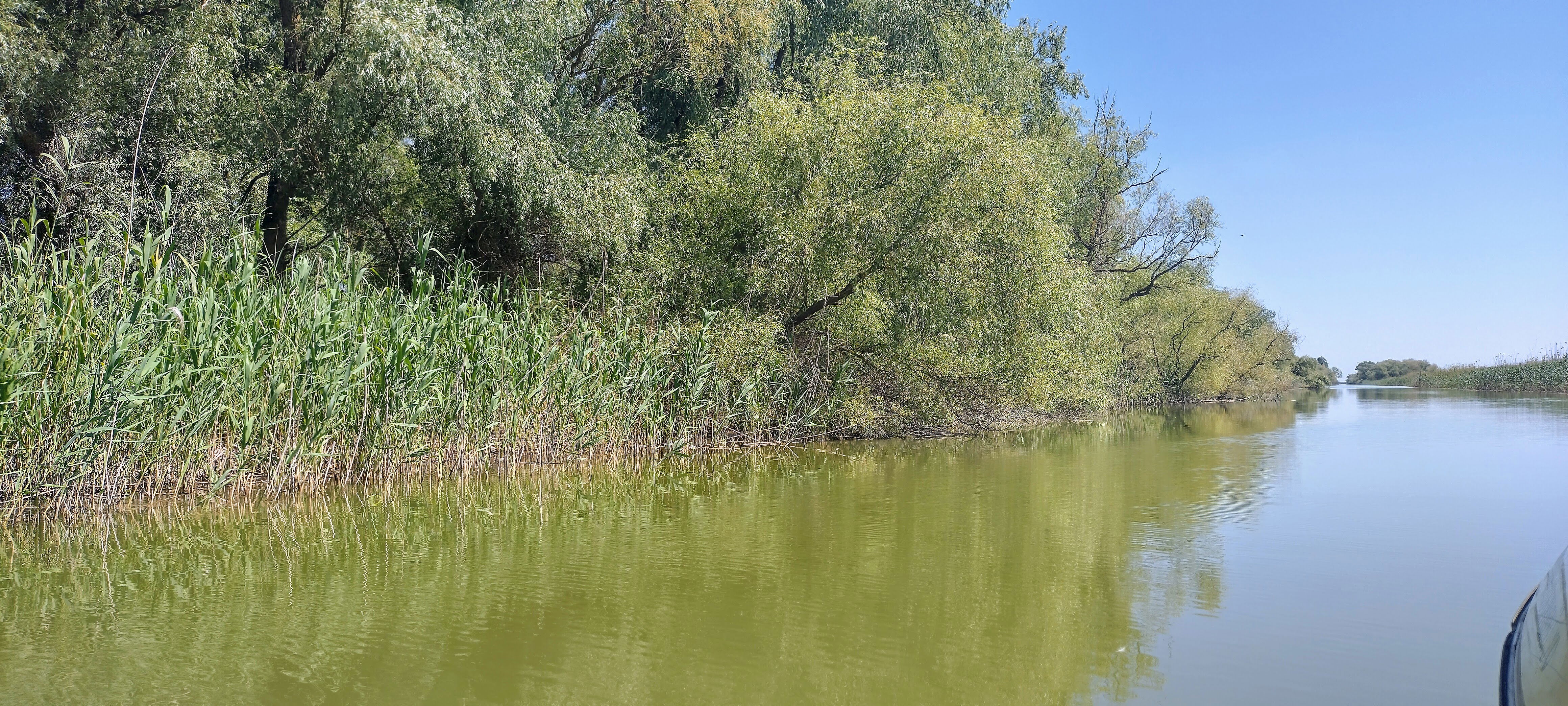
Intrarea pe lacul Matița // The entry to Lake Matița
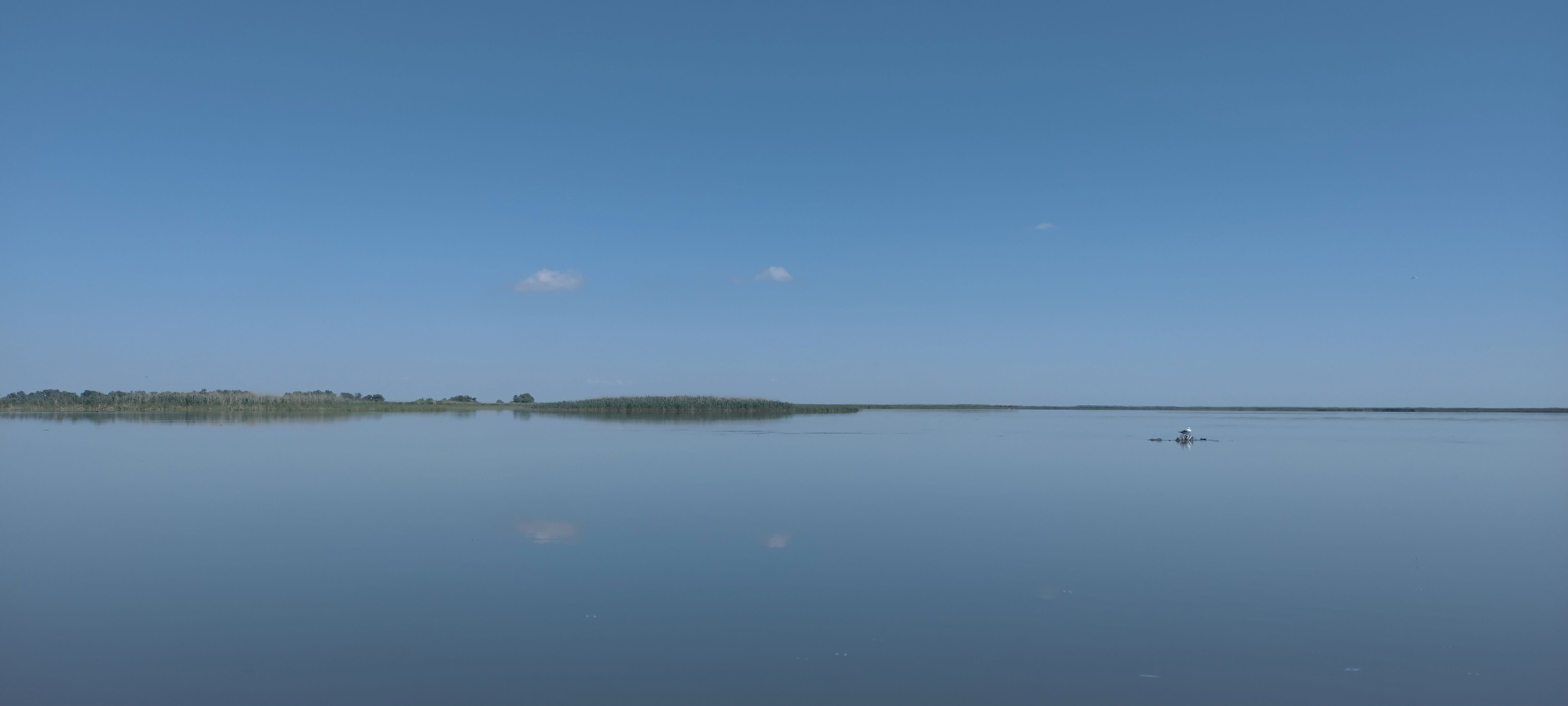
Lacul Merhei // Lake Merhei
De la lacul Merhei am intrat pe, după părerea mea, cel mai frumos canal din Deltă (cel puțin din ce-am văzut până acum): canalul Sidor.
From Lake Merhei, we entered, in my opinion, the most beautiful canal in the Delta (at least from what we've seen so far): the Sidor Canal.
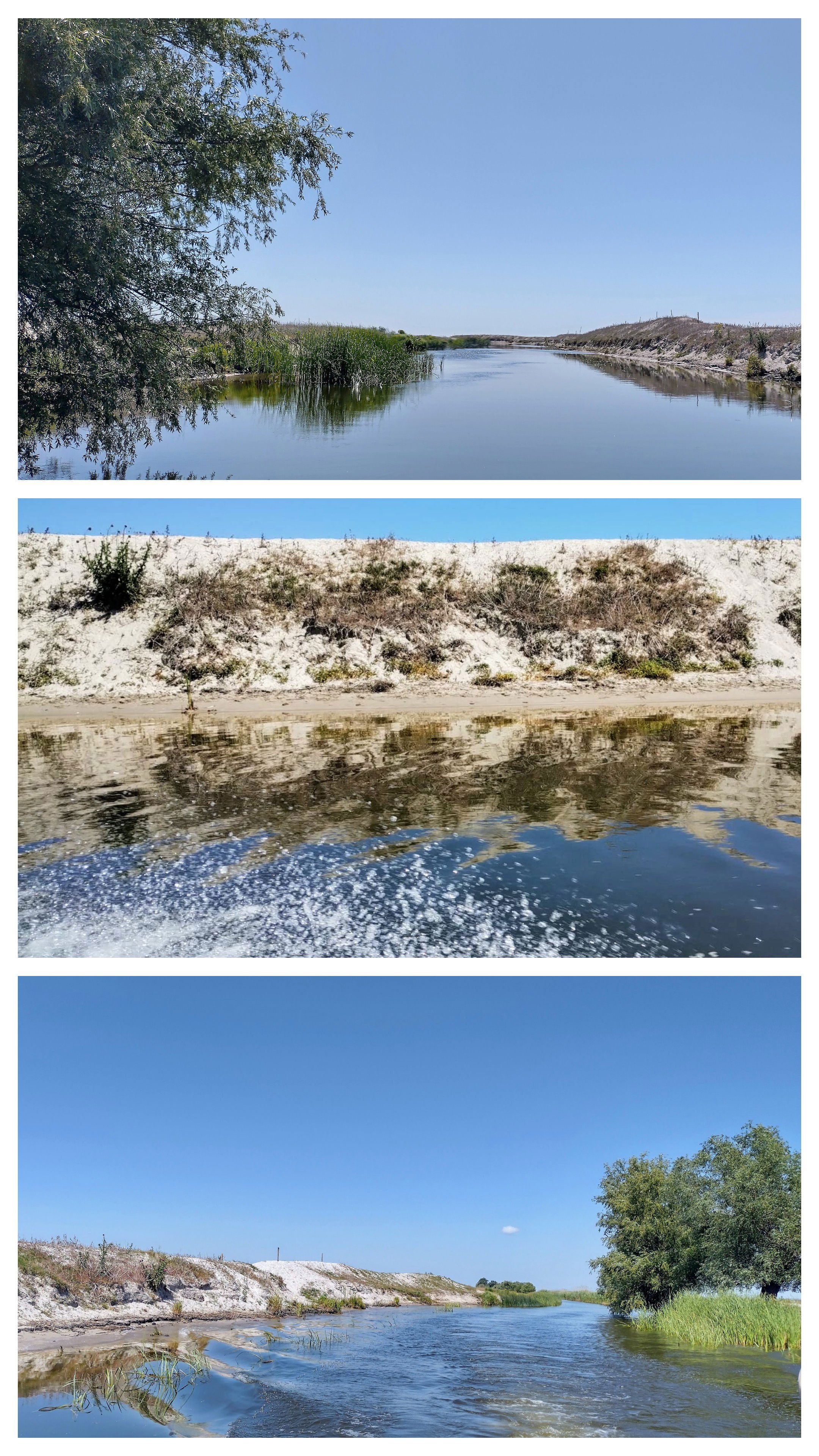
Canalul Sidor // The Sidor Canal
Cu un mal de nisip permanent pe partea dreaptă, ape superficiale și un peisaj extraterestru, canalul Sidor găzduiește animale semi-libere. Dacă povestea cailor de la Letea, sălbăticiți, e una mai de succes, povestea bovinelor din această zonă este una tristă: populația locală, foarte săracă, beneficiază de ajutoare de la stat pentru creșterea bovinelor dar, neavând cu ce să le hrănească, le eliberează să pască pe malurile nisipoase ale Dunării - e clar că nu duc cea mai îmbelșugată viață (nici localnicii, nici vacile).
With a permanent sandbank on the right side, shallow waters, and an extraterrestrial landscape, the Sidor Canal hosts semi-wild animals. If the story of the wild horses of Letea is more successful, the story of the cattle in this area is a sad one: the local population, very poor, benefits from state aid for raising cattle but, having nothing to feed them, they release them to graze on the sandy banks of the Danube - it's clear that they don't lead the most abundant life (neither the locals nor the cows).
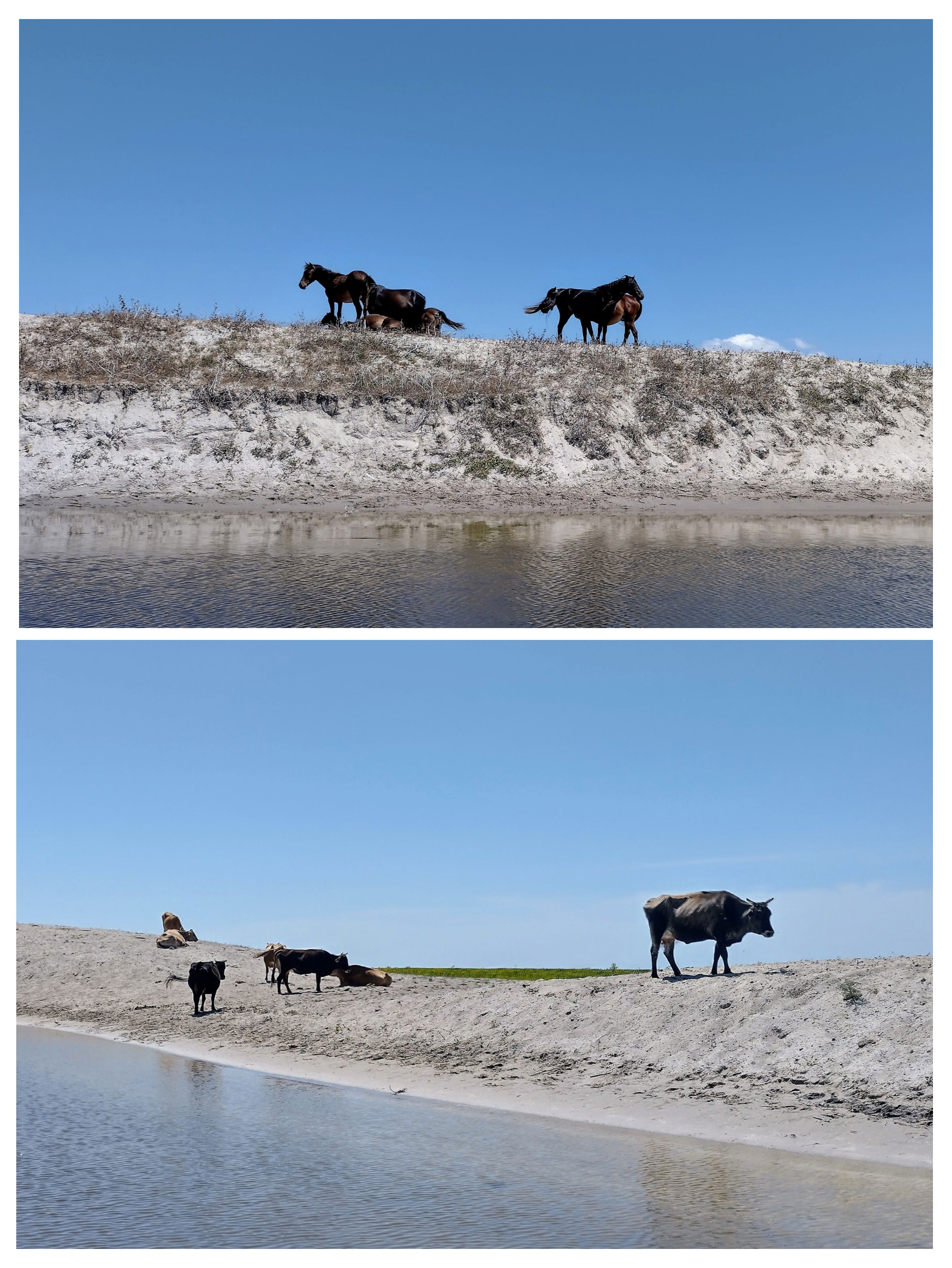
În Letea am ancorat lângă mașina de teren deja pregătită și am pornit la drum spre C.A. Rosetti, reședința de comună; pe la jumătatea drumului dintre sate, am virat la stânga spre Pădurea Letea. Peisajul aici parcă a prins puțină viață, dar tot uscat este, iar vegetația specifică pare, și ea, extraterestră.
In Letea, we anchored near the prepared off-road vehicle and set off towards C.A. Rosetti, the commune's residence; about halfway between the villages, we turned left towards the Letea Forest. The landscape here seemed to come to life a bit, but it is still dry, and the specific vegetation also seems extraterrestrial.
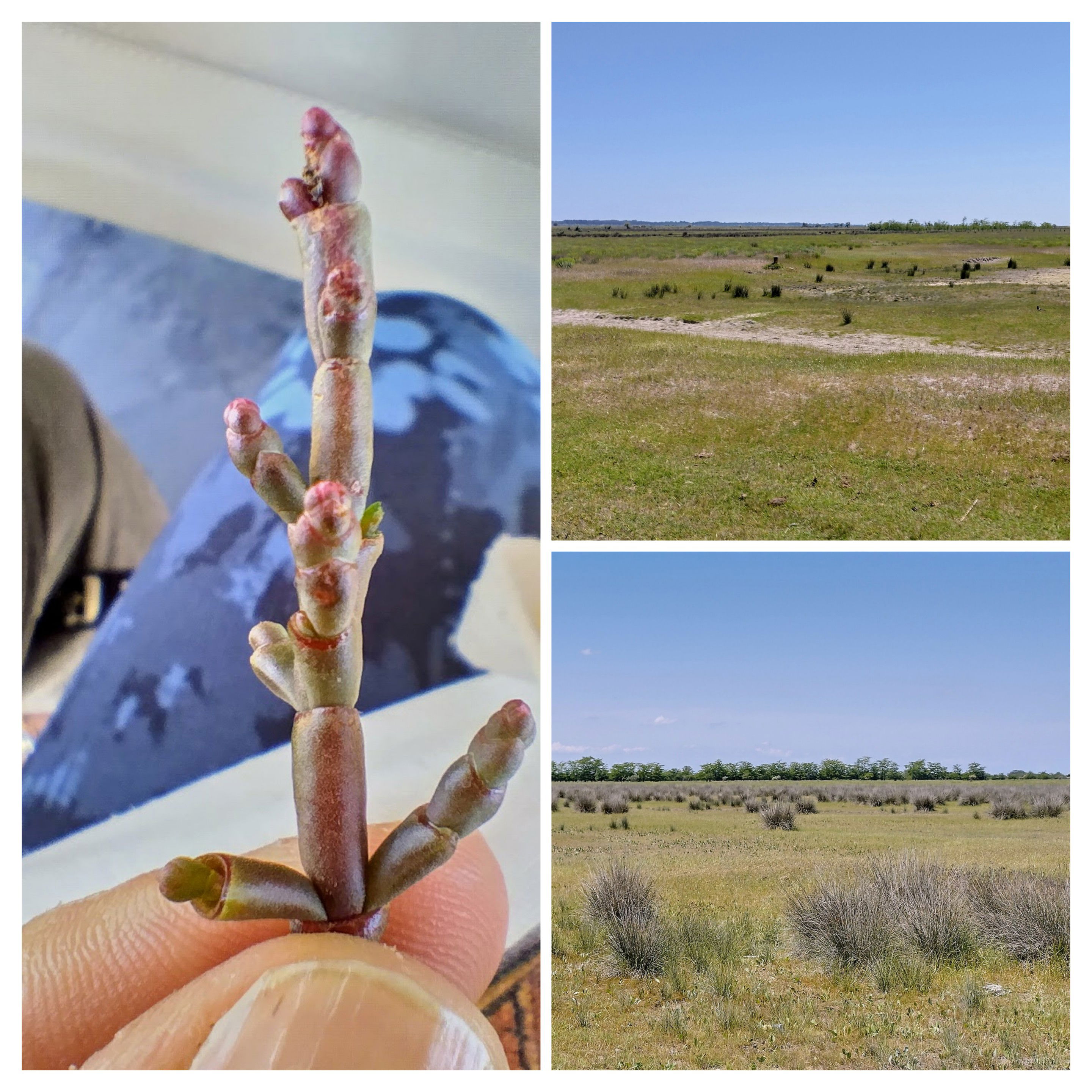
Iarbă sărată, sau săricică (Salicornia europaea), și smocuri de iarbă lângă Pădurea Letea // Salt grass, or glasswort (Salicornia europaea), and tufts of grass near the Letea Forest
Pădurea Letea este un areal strict protejat din Delta Dunării, în care se intră doar cu ghid acreditat (firește, Iulian al nostru este!) și doar pe anumite trasee. Asta înseamnă că nu ne-am putut da jos din mașină oricând, ci doar când am ajuns în "miezul" pădurii. Până acolo însă, am trecut printre hașmace2 cu zone combinate de stejari (Quercus robur, Quercus pedunculiflora) și frasini (Fraxinus angustifolia, Fraxinus pallisiae).
2. Un cuvânt ce încă nu se află în DEX, dar care semnifică zonele joase, mai umede, dintre dunele de nisip
The Letea Forest is a strictly protected area in the Danube Delta, where entry is only allowed with an accredited guide (of course, our Iulian is one!) and only on certain routes. This means that we couldn't get out of the car whenever we wanted, only when we reached the "heart" of the forest. Until then, however, we passed through mixed groves of oaks (Quercus robur, Quercus pedunculiflora) and ash trees (Fraxinus angustifolia, Fraxinus pallisiae).
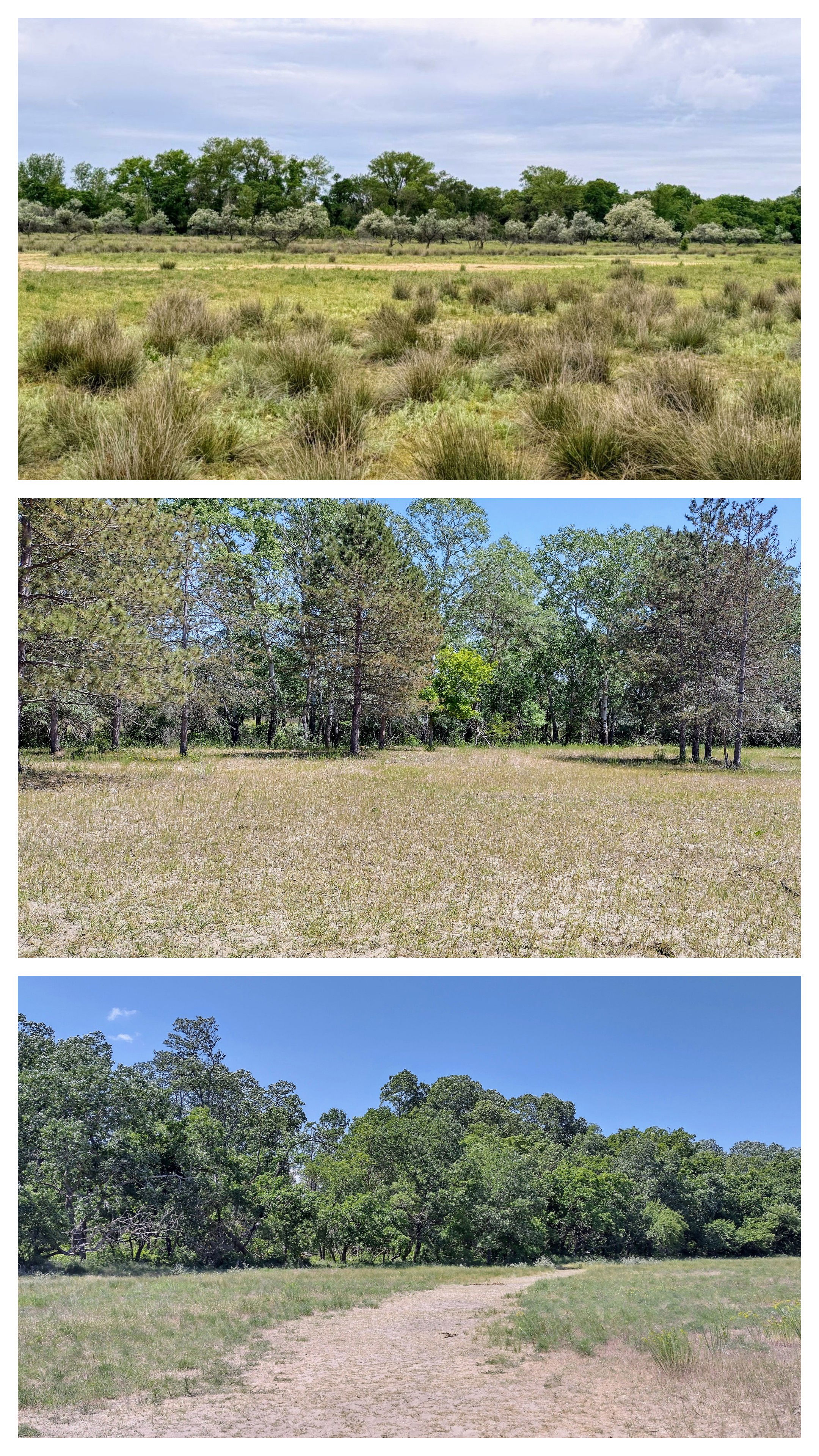
Pădurea Letea // The Letea Forest
Aici am văzut celebrii cai sălbăticiți, dar și diverșii copaci printre care aceștia se adăpostesc.
Here we saw the famous wild horses and the various trees among which they take shelter.

Stejar, dud alb (Morus alba) și măr sălbatic (Malus silvestris) // Oak, white mulberry (Morus alba) and European crab apple (Malus silvestris)
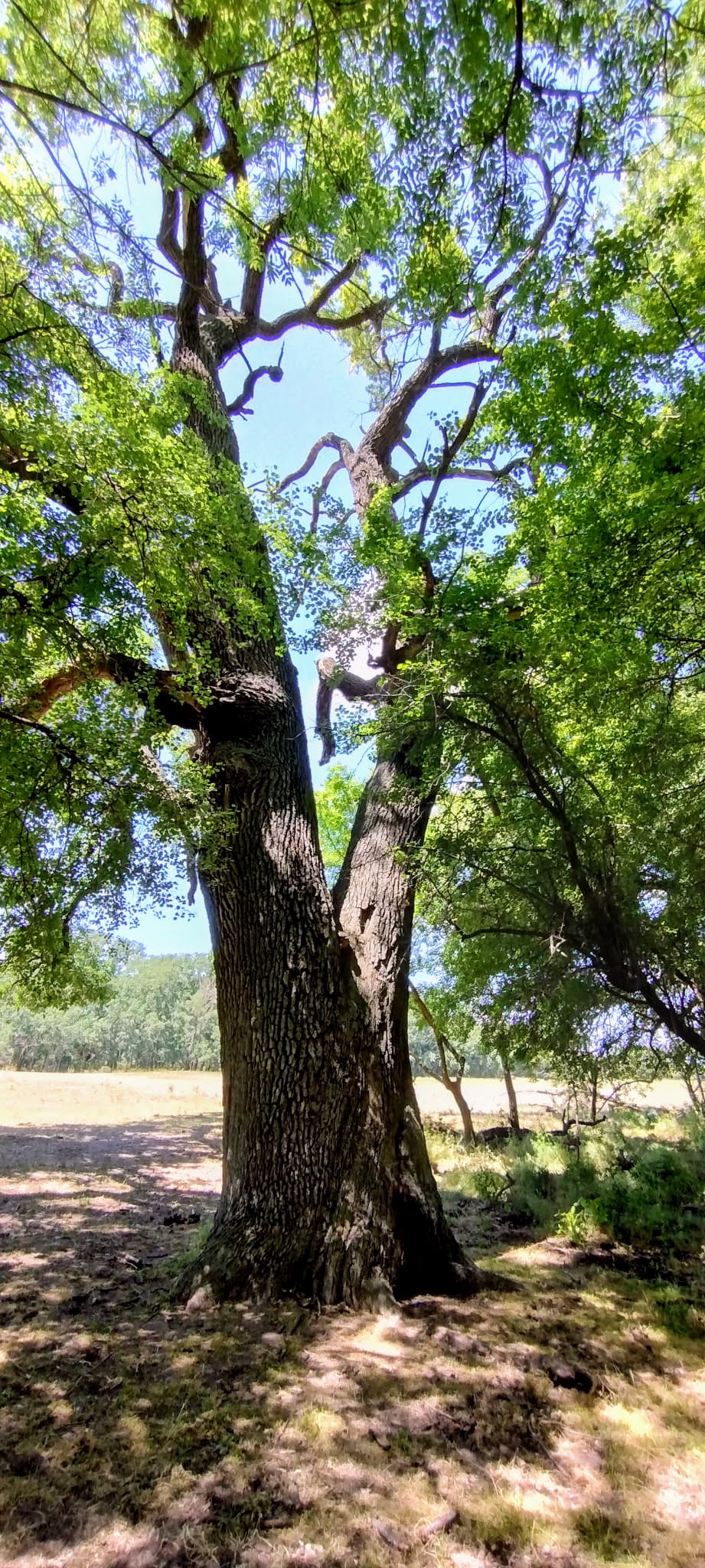
Bătrân stejar în pădurea Letea // Old oak in the Letea Forest
Caii de la Letea nu sunt sălbatici în adevăratul sens al cuvântului - ei sunt cai sălbăticiți atunci când proprietarii lor i-au eliberat în zonă. Au format herghelii considerate, inițial, dăunătoare, pentru că rodeau scoarța copacilor din pădurea Letea dar, într-un final, aceștia sunt acum lăsați să galopeze liber în pădure și în jurul ei.
The horses of Letea are not wild in the true sense of the word - they are feral horses that were released into the area by their owners. They formed herds initially considered harmful because they gnawed the bark of trees in the Letea forest but, in the end, they are now allowed to roam freely in the forest and around it.
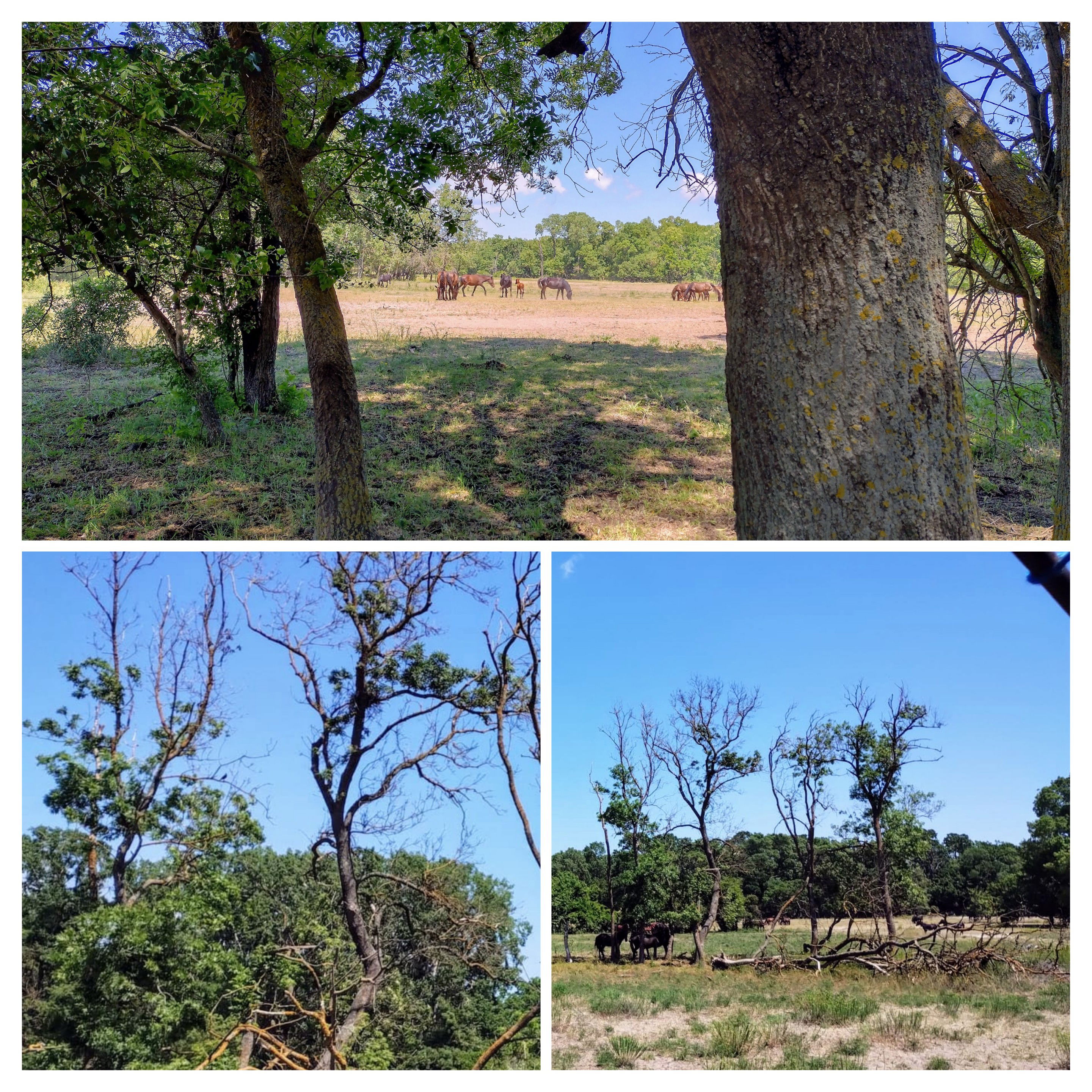
Cai (Equus ferus caballus) printre copaci // Horses (Equus ferus caballus) among trees
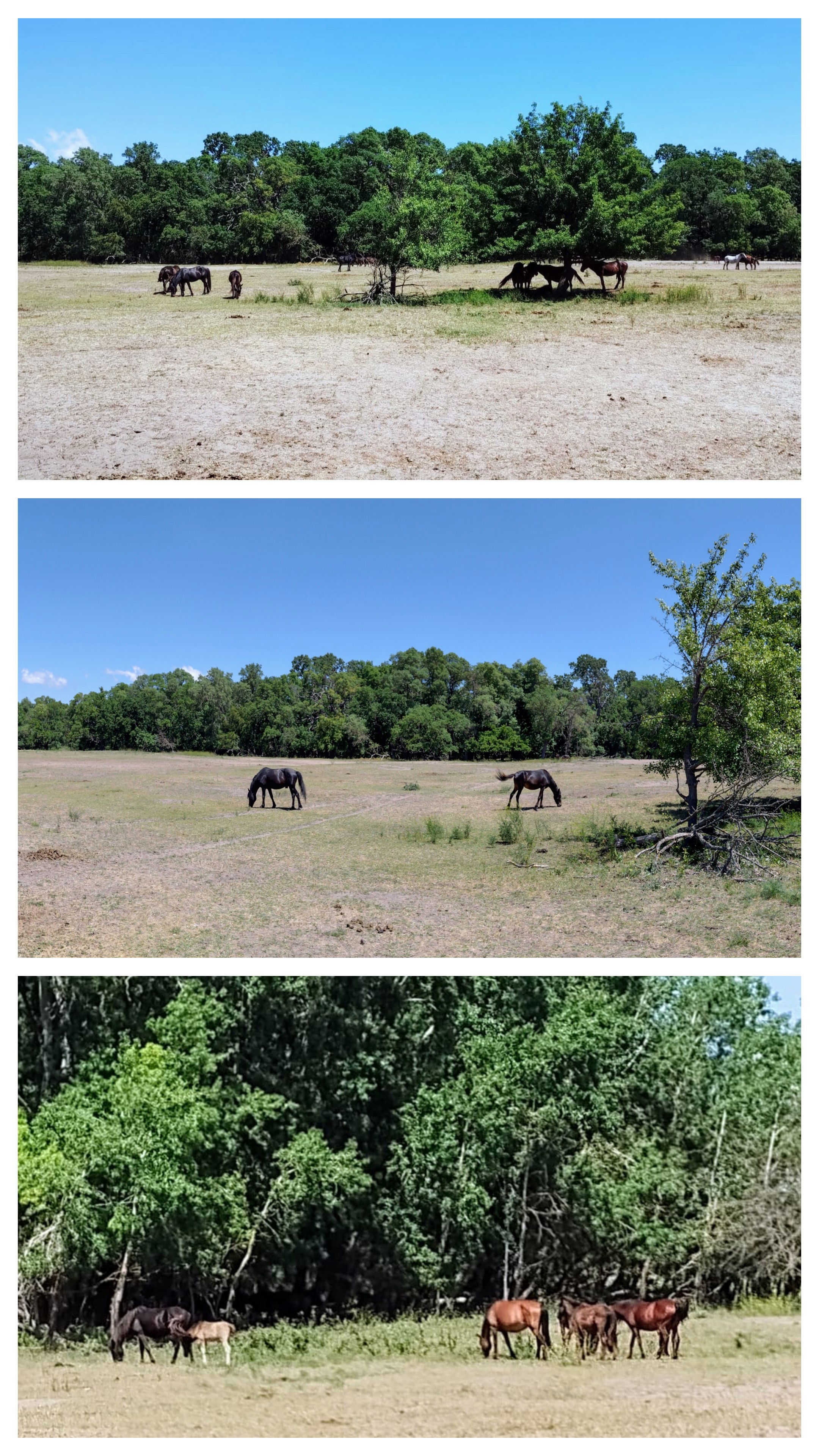
Cai păscând // Horses grazing
Pe lângă cai am mai văzut și diverse păsări, noi pentru noi, precum cinteza, ciocîntorsul și fazanul (pe care l-am văzut din abundență în Dobrogea, dar nu în Delta, până acum).
Besides the horses, we also saw various birds new to us, such as the finch, the stilt, and the pheasant (which we saw abundantly in Dobrogea, but not in the Delta until now).
Cinteze (Fringilla coelebs) bălăcindu-se // Common chaffinches (Fringilla coelebs) taking a bath
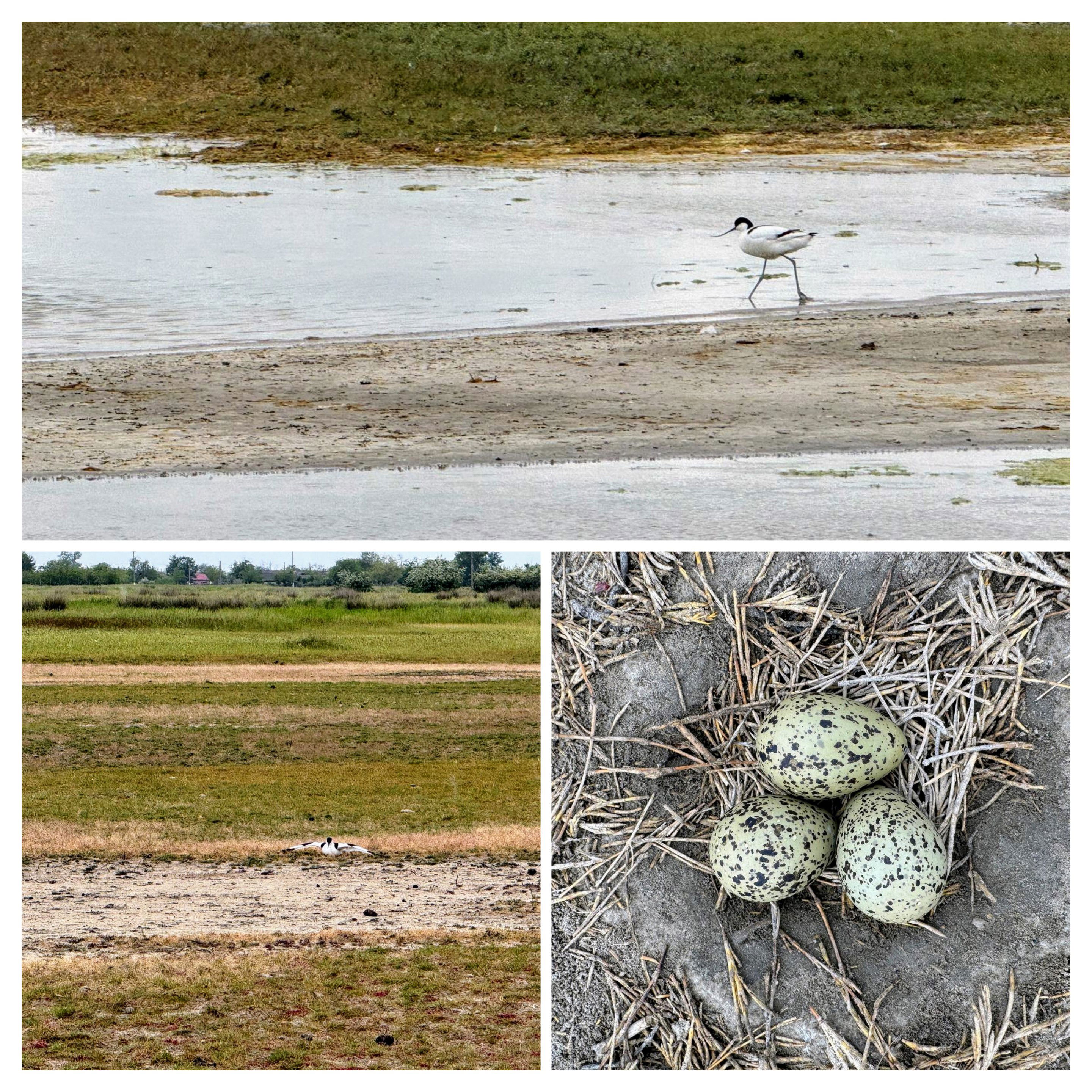
Ciocîntorsul (Recurvirostra avosetta) cu cuib // The pied avocet, or stilt (Recurvirostra avosetta) with nest
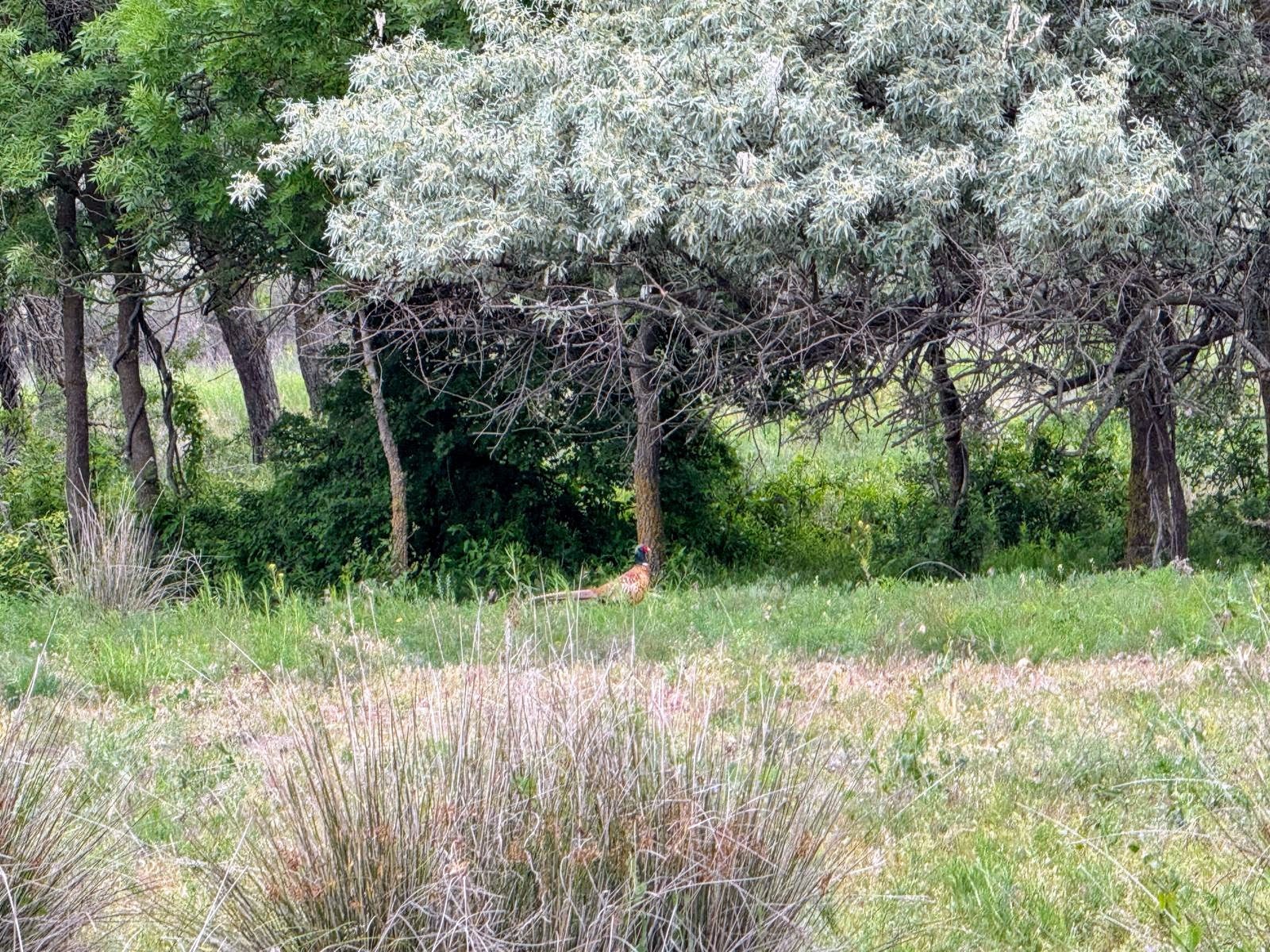
Fazanul comun (Phasianus colchicus) // The common pheasant (Phasianus colchicus)
După ce am admirat animalele, ne-am întors la mașină pentru a o lua spre dunele de nisip.
After admiring the animals, we returned to the car to head towards the sand dunes.
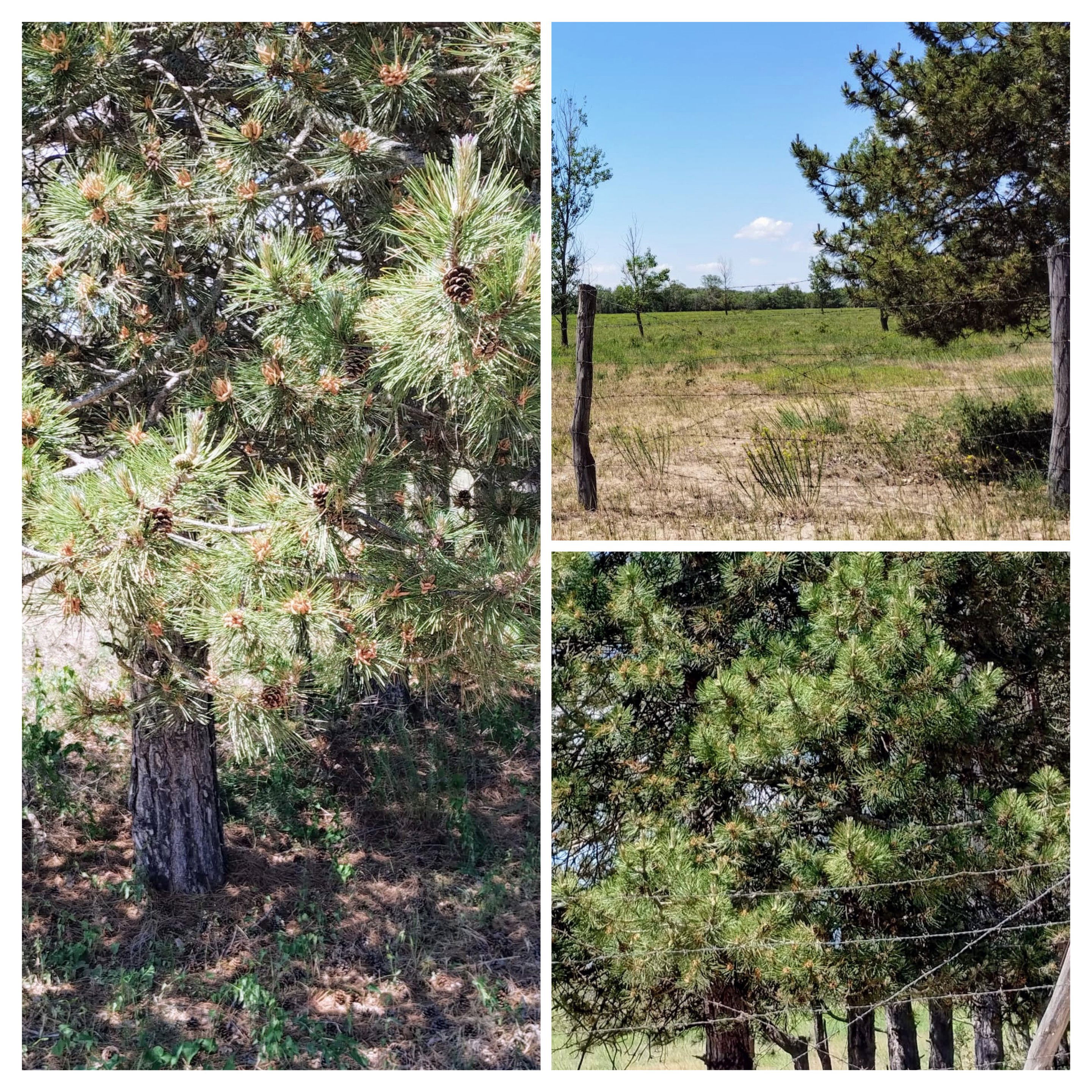
Spre dune, printre conifere... // To the dunes, through evergreens...
Pentru a ajunge la dune am mers puțin printr-o pădure atât de fierbinte cum numai o pădure pe nisip ar putea fi. Am observat plante specifice, precum cârcelul (din care se extrage efedrina) sau hameiul, și am văzut trunchiuri de copaci "ciuruite" de ciocănitori - aici își are cuibul Woody.
To reach the dunes, we walked a bit through a forest as hot as only a forest on sand could be. We observed specific plants, such as the sea grapes (of which ephedrine is extracted) or hops, and saw tree trunks "riddled" by woodpeckers - this is where Woody's nest is.
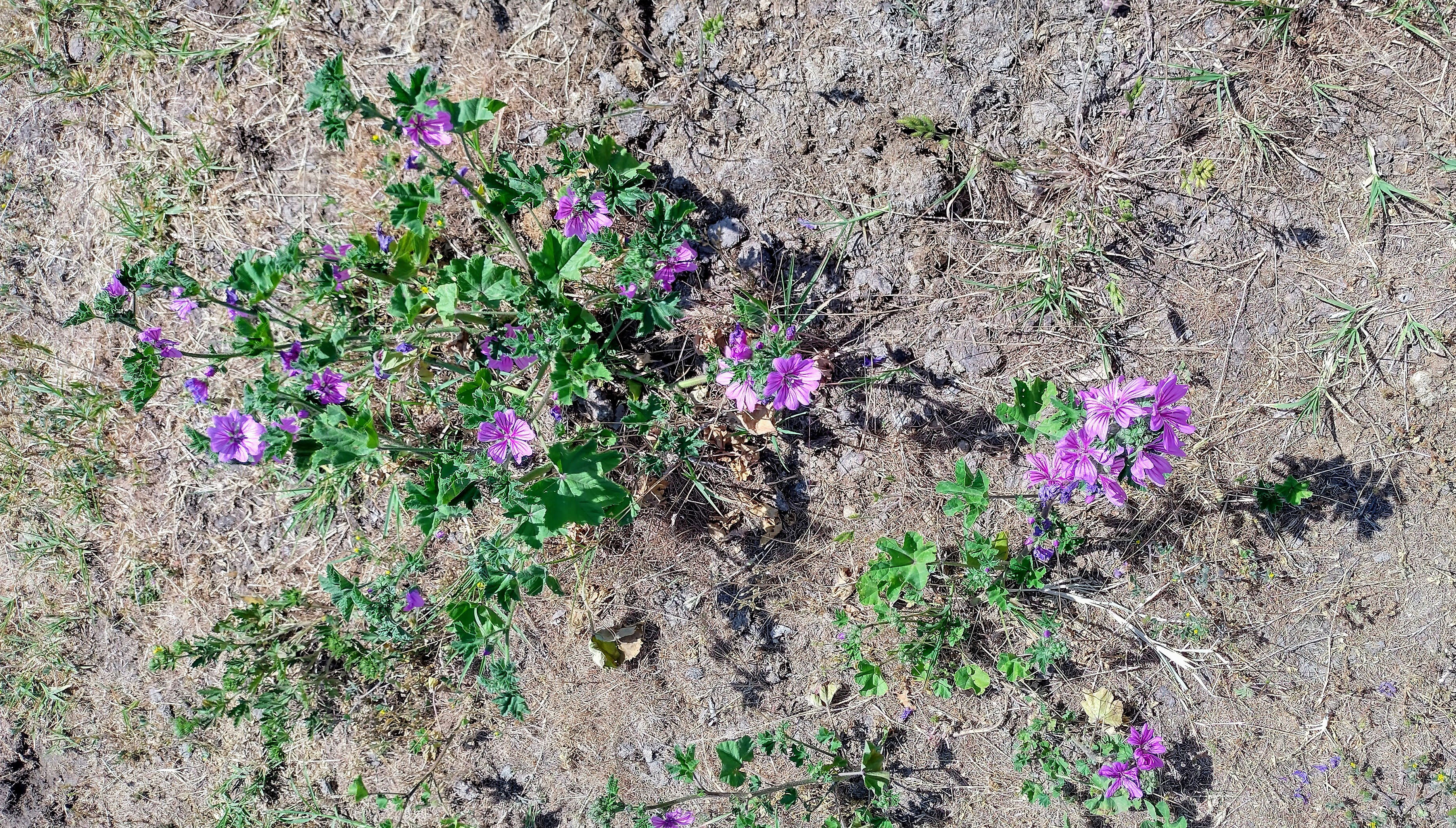
Nalba de pădure (Malva sylvestris) // The common mallow (Malva sylvestris)
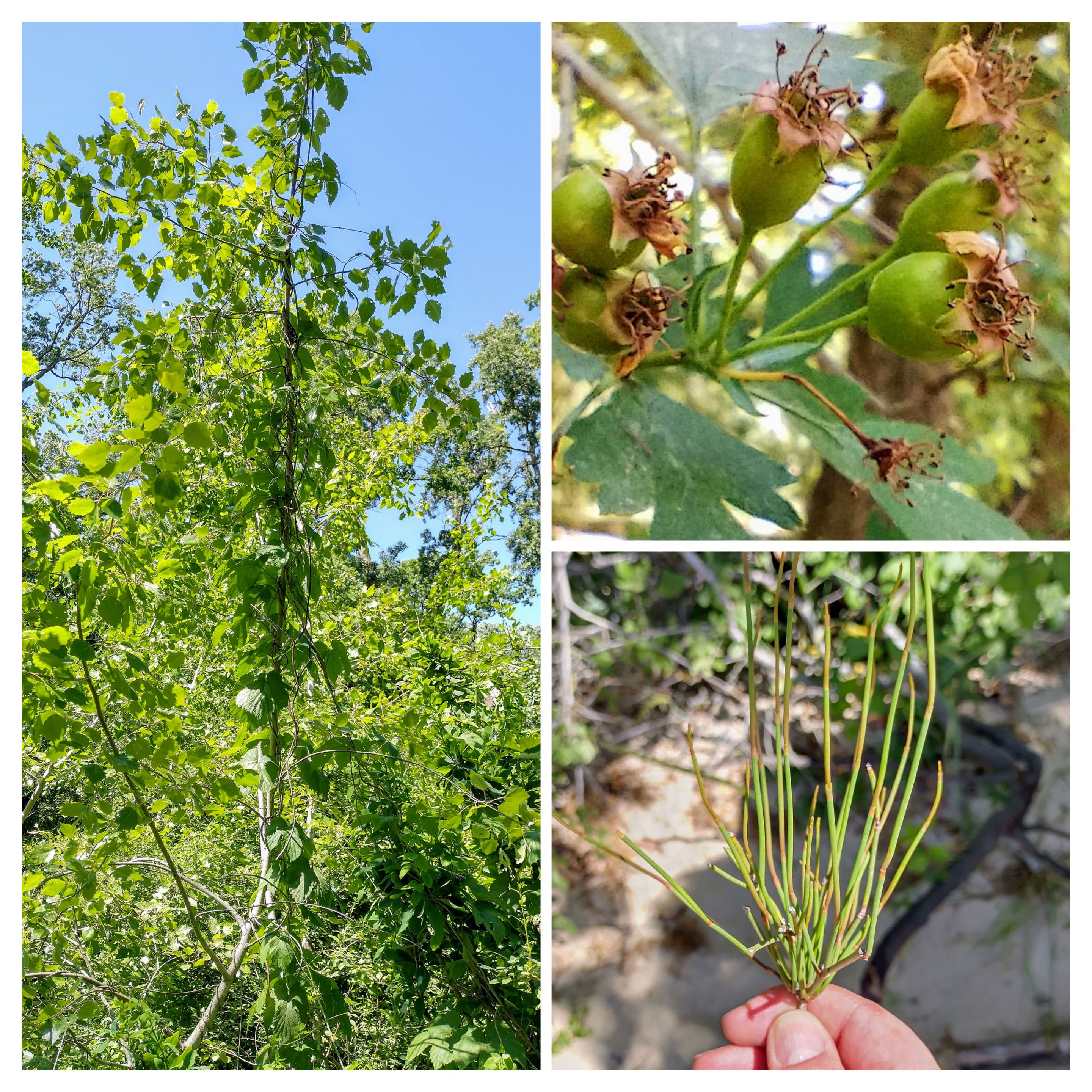
Hamei (Humulus lupulus) cocoțat pe copaci, păducel (Crataegus ambigua) și cârcel (Ephedra distachya) // Common hops (Humulus lupulus) climbing on trees, hawthorn (Crataegus ambigua) and sea grapes (Ephedra distachya)

Copac ciocănit și peisaj arid în pădurea Letea // Pecked tree and arid landscape in the Letea Forest
La dune efectiv nu am putut merge, pentru că peisajul protejat este relativ instabil și ușor de deranjat. Le-am admirat din puțina umbră a lizierei, și ne-am întors apoi la Letea pentru prânz.
We couldn't actually go to the dunes because the protected landscape is relatively unstable and easily disturbed. We admired them from the little shade at the edge of the forest and then returned to Letea for lunch.
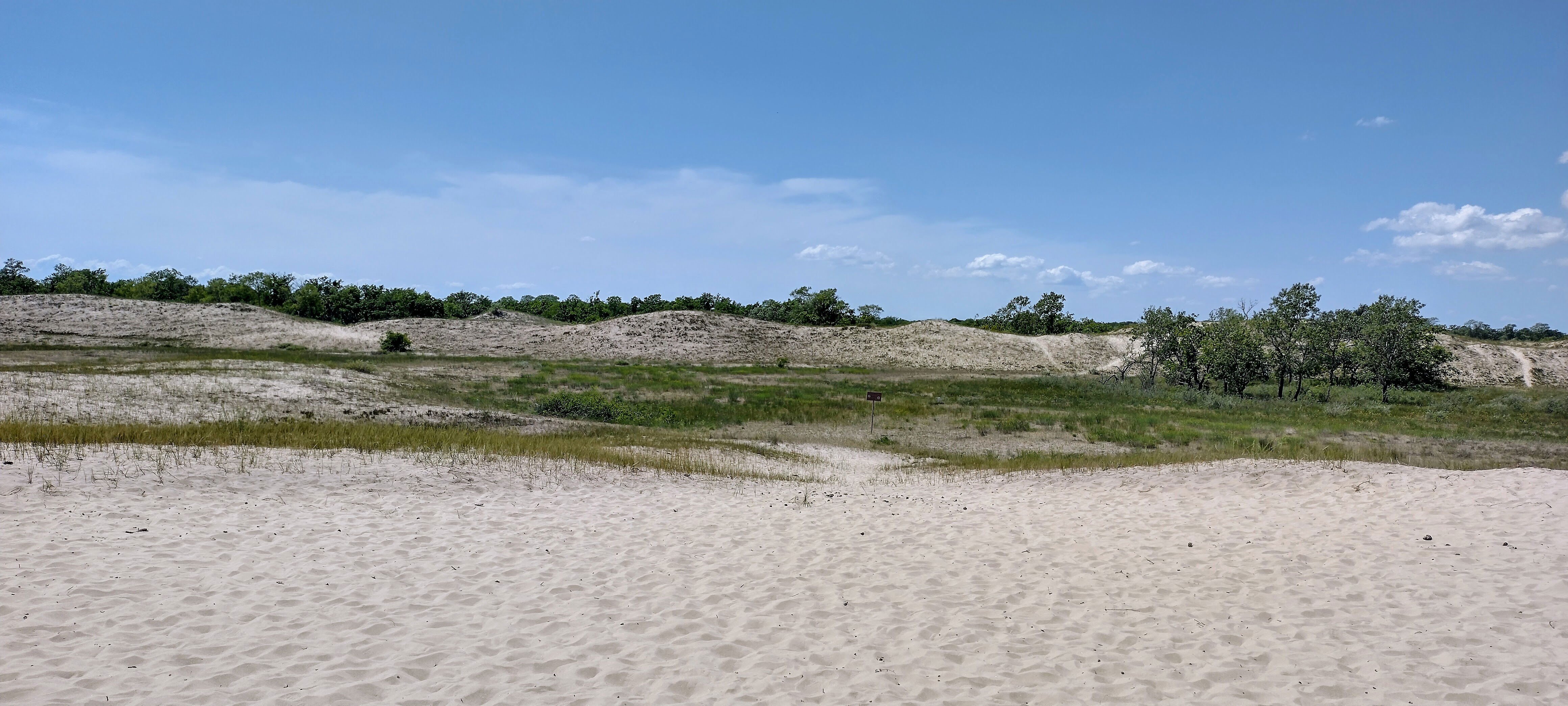
Dunele de nisip de la Letea // The Letea sand dunes
Povestea cu nisipul se continuă în Letea, unde ulițele sunt practic acoperite cu nisip, ceea ce nu pare, totuși, să încurce traficul.
The sand story continues in Letea, where the streets are practically covered with sand, which doesn't seem to hinder traffic.
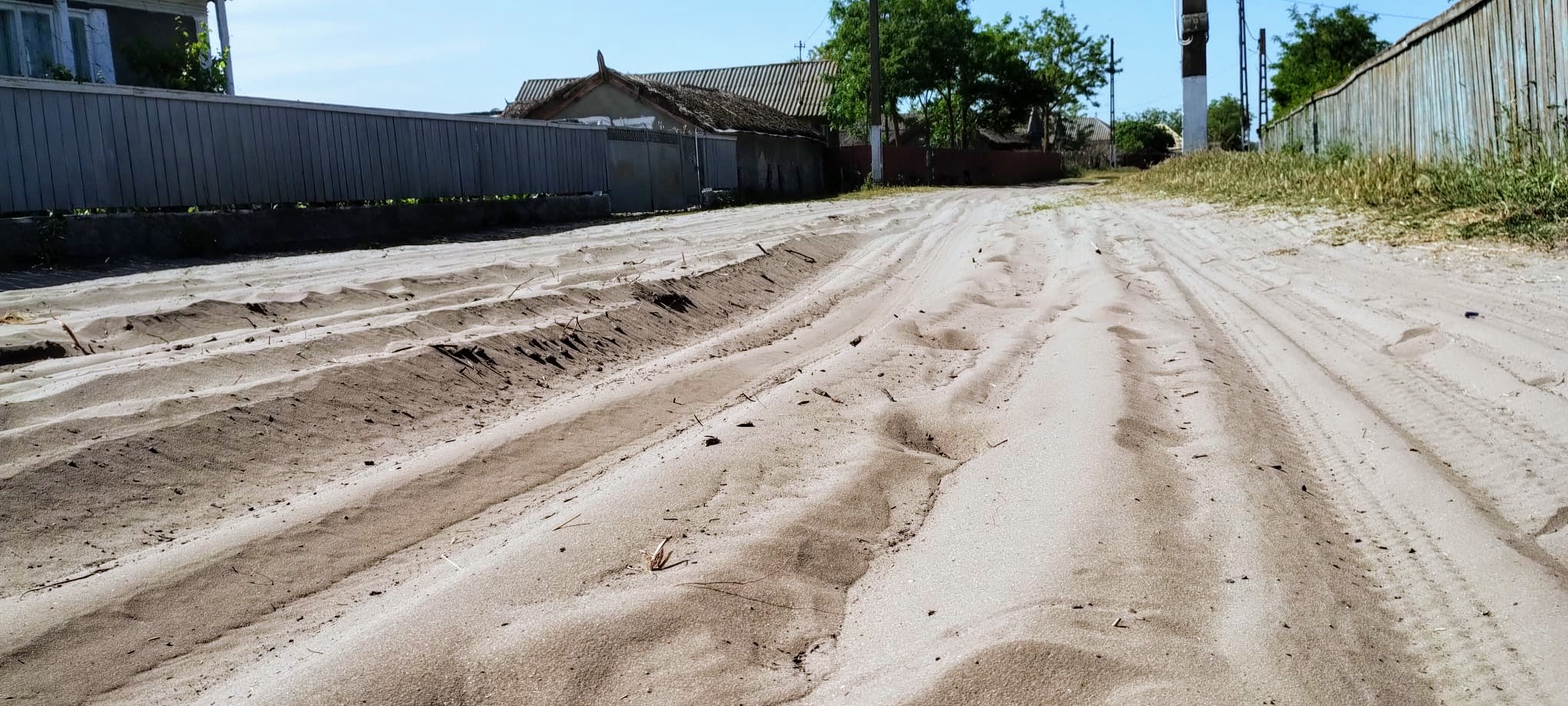
Uliță în Letea // Street in Letea
Satului Letea i s-a tot făcut reclamă negativă, de sat sărac / sărăcăcios, unde nu crește nimic. Într-adevăr, solul e nisipos, dar am văzut oameni care au cultivat pe pământ adus: roșii, cartofi, porumb.
La Hanul Gabrielei3, unde am mâncat prânzul, am văzut o casă superbă, care ar fi putut să fie în Satul Pescăresc Tradițional, și o grădină plină de viață. Și multe asemenea case în sat.
3. https://tinyurl.com/3nbcezsy
Letea village has received negative publicity as a poor/poverty-stricken village where nothing grows. Indeed, the soil is sandy, but we saw people who cultivated on brought soil: tomatoes, potatoes, corn.
At Gabriela's Inn3, where we had lunch, we saw a beautiful house that could have been in the Traditional Fishing Village, and a garden full of life. And many such houses in the village.
3. https://tinyurl.com/3nbcezsy
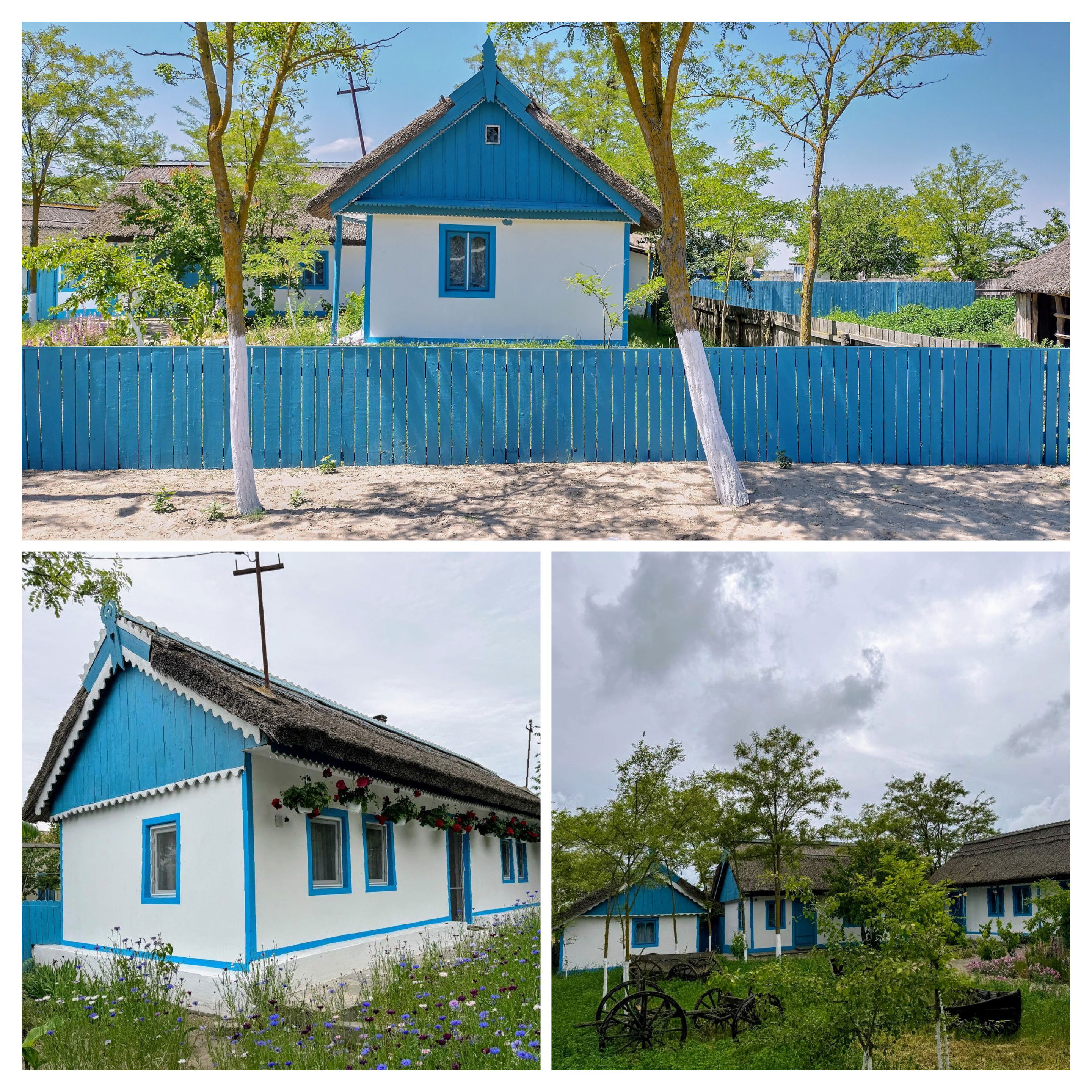
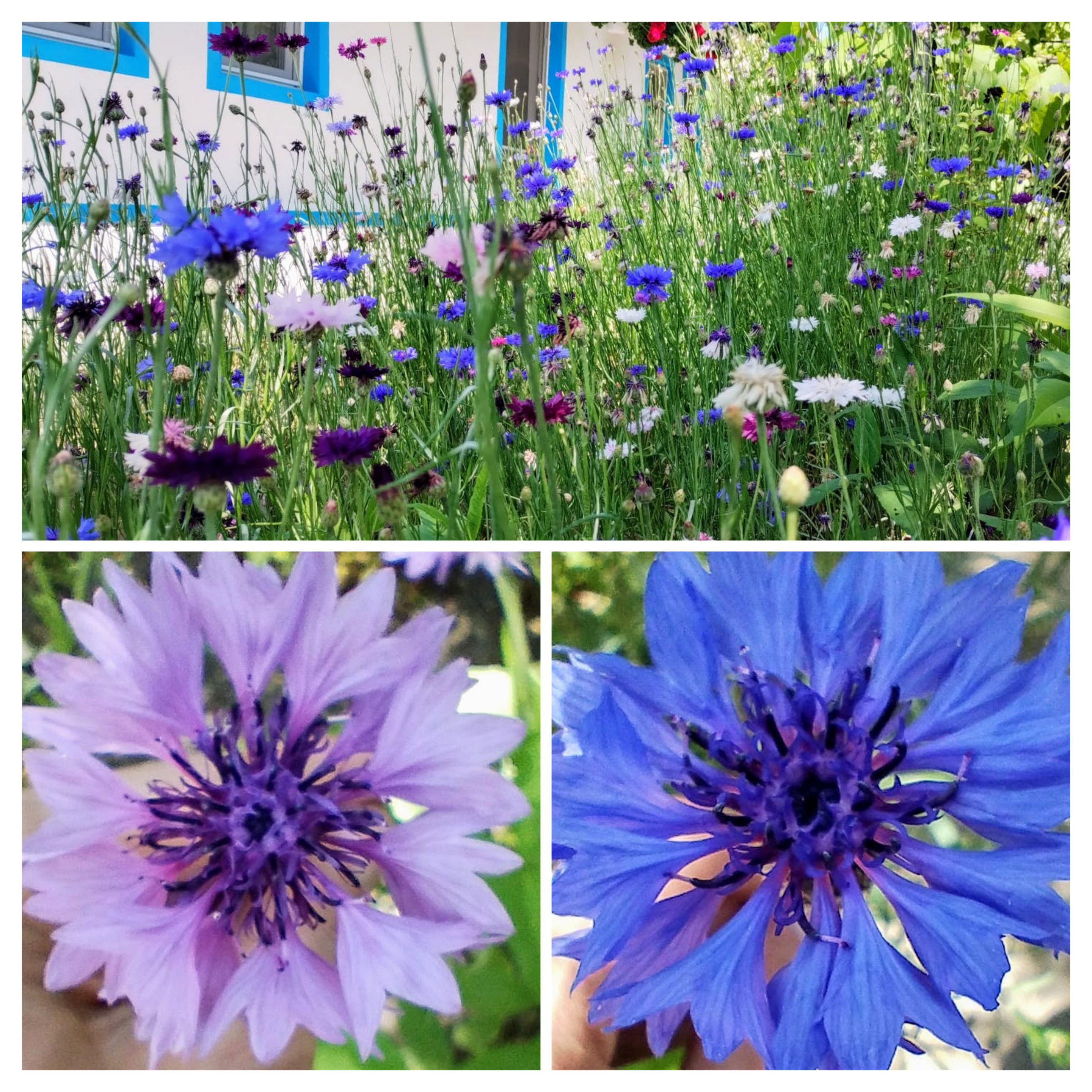
Albăstrele (Centaurea cyanus) în grădina Hanului Gabrielei // Cornflowers (Centaurea cyanus) in Gabriela's Inn garden
Ne-am întors la barcă și am luat-o înapoi pe același traseu, prin C. Sidor - L. Merhei - C. Suez - L. Matița. Pe lacul Merhei am văzut un frumos cuplu de lebede, iar pe lacul Matița am văzut un rățoi cu ciuf, cărându-și puii în spate; din nefericire, am reușit să îl speriem - când ne-am dat seama, ne-am și retras...
We returned to the boat and took the same route back, through C. Sidor - L. Merhei - C. Suez - L. Matița. On Lake Merhei we saw a beautiful swan couple, and on Lake Matița we saw a red-crested pochard, carrying his chicks on his back; unfortunately, we managed to scare him - when we realized that, we left...

Cuplu de lebede // Swan couple
Rața cu ciuf (Netta rufina) și cu pui // The red-crested pochard (Netta rufina) with chicks
De aici am schimbat traseul, urcând pe lacul Babina către canalul Rădăcinoasele (a nu se confunda cu canalul sau lacurile Rădăcinos sau Rădăcinoasa - harta vă dă toate detaliile...).
From here we changed the route, going up Lake Babina towards the Rădăcinoasele Canal (not to be confused with the Rădăcinos or Rădăcinoasa canal or lakes - the map gives you all the details...).
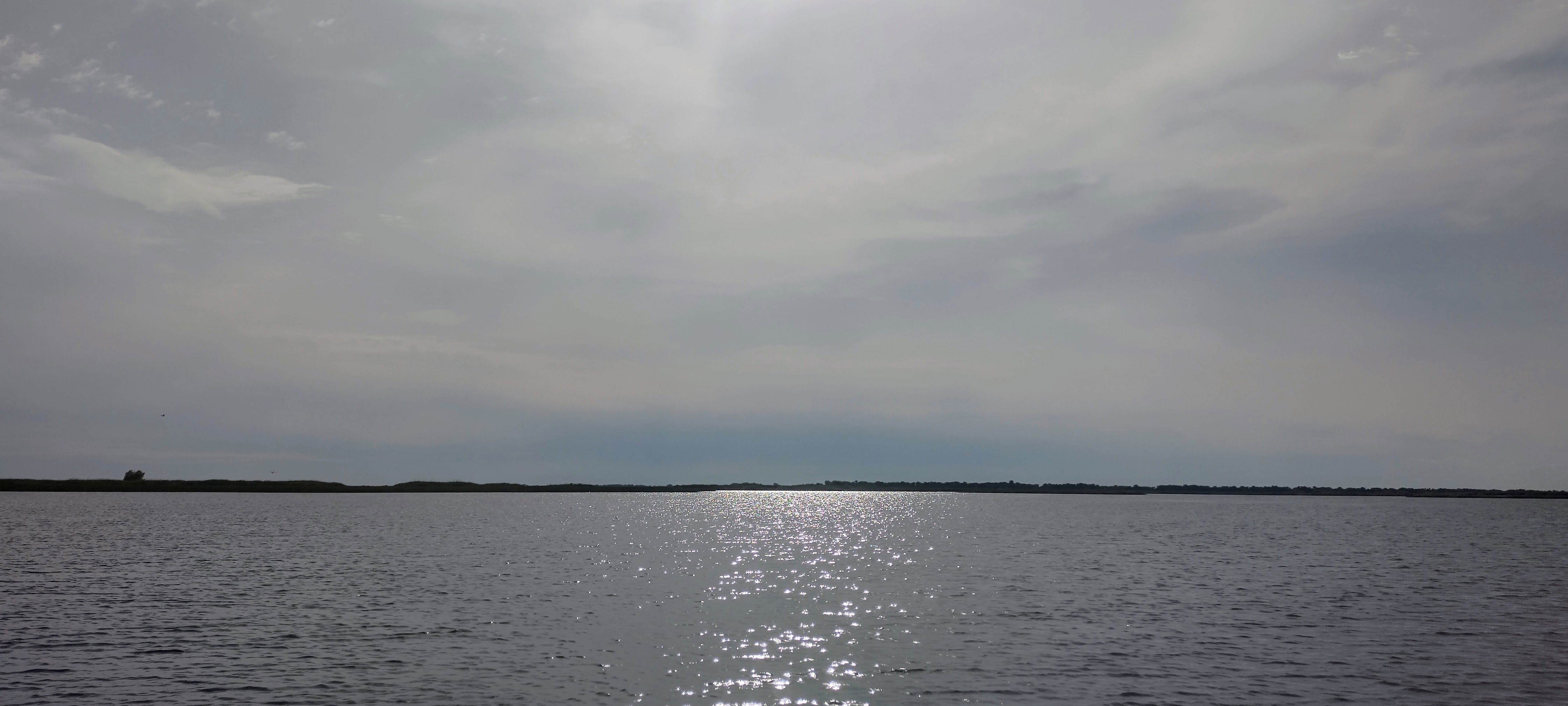
Lacul Babina // Lake Babina
Aici am ocolit colțul sud-vestic al zonei strict protejate Roșca-Buhaiova, unde nu avem voie să intrăm, spre canalul Stipoc.
Here we skirted the southwestern corner of the strictly protected Roșca-Buhaiova area, where we are not allowed to enter, towards the Stipoc Canal.
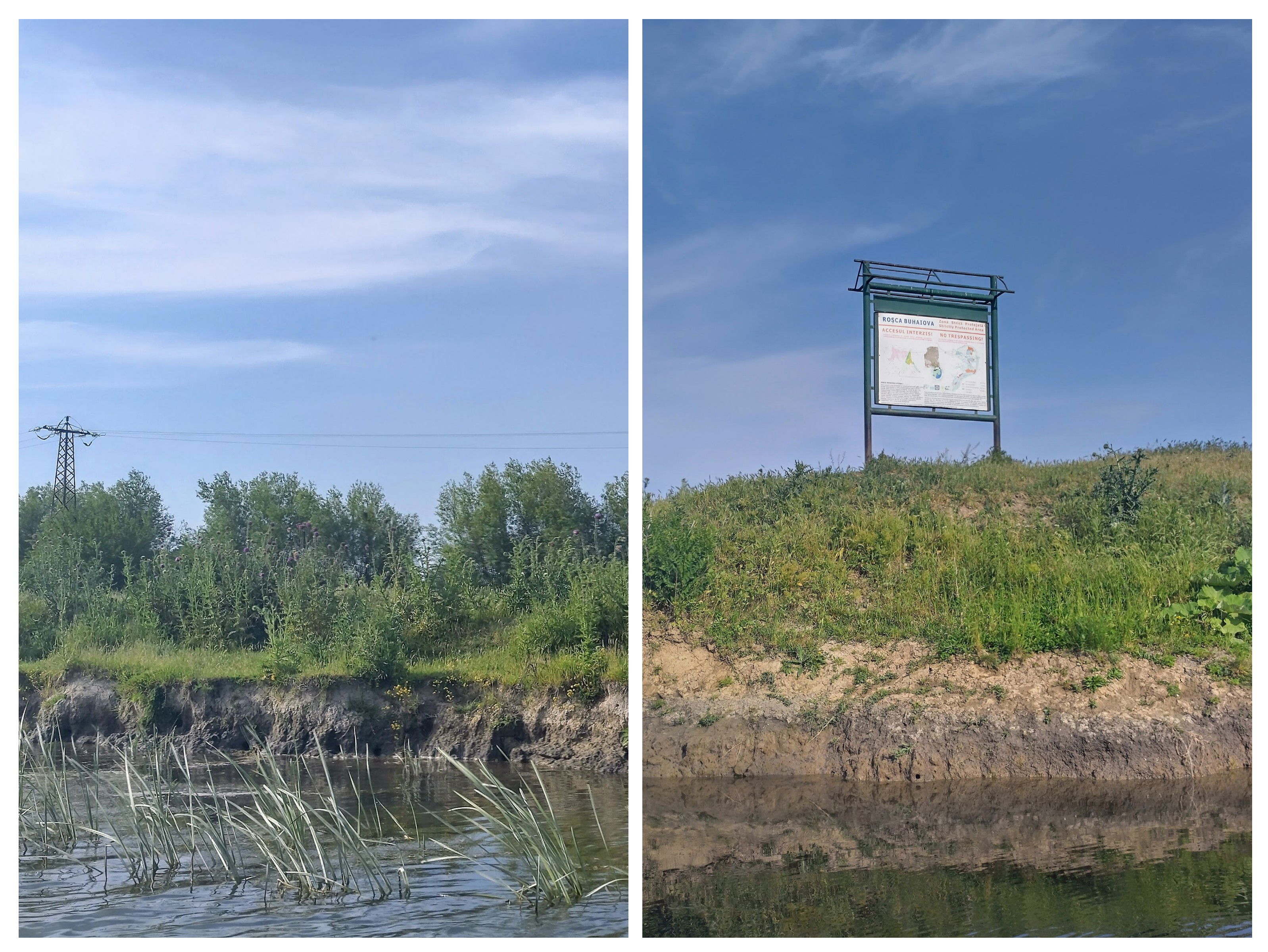
Intrarea pe canalul Stipoc // Entry on the Stipoc Canal
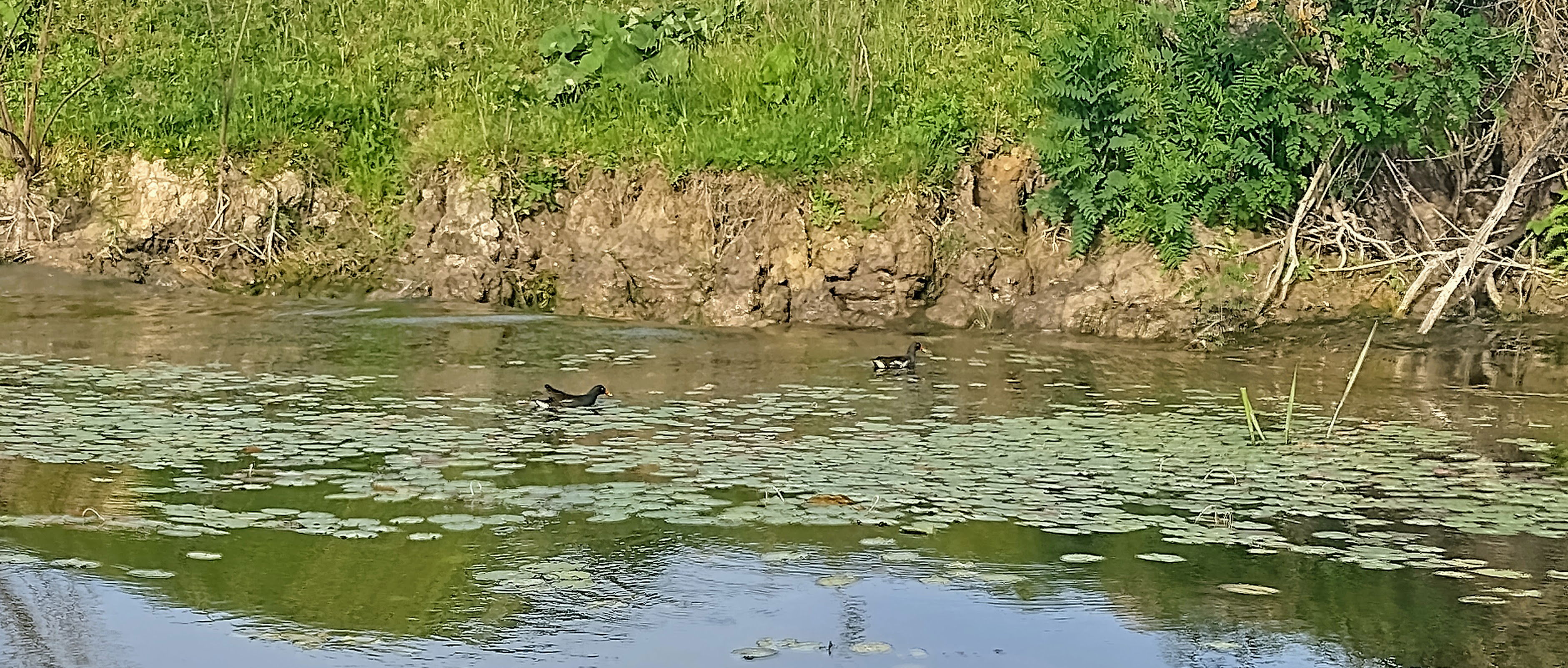
Rațe (Anas platyrhynchos) pe canalul Stipoc // Mallards (Anas platyrhynchos) on the Stipoc Canal
Am coborât apoi pe acest canal până la Mănăstirea Stipoc, o mănăstire ortodoxă de rit vechi (staroveră). Ne-au întâmpinat aici o multitudine de flori colorate, și o bisericuță liniștită și foarte frumos decorată.
We then went down on this canal to the Stipoc Monastery, an old-rite (starover) Orthodox monastery. Here we were greeted by a multitude of colorful flowers and a quiet and beautifully decorated little church.
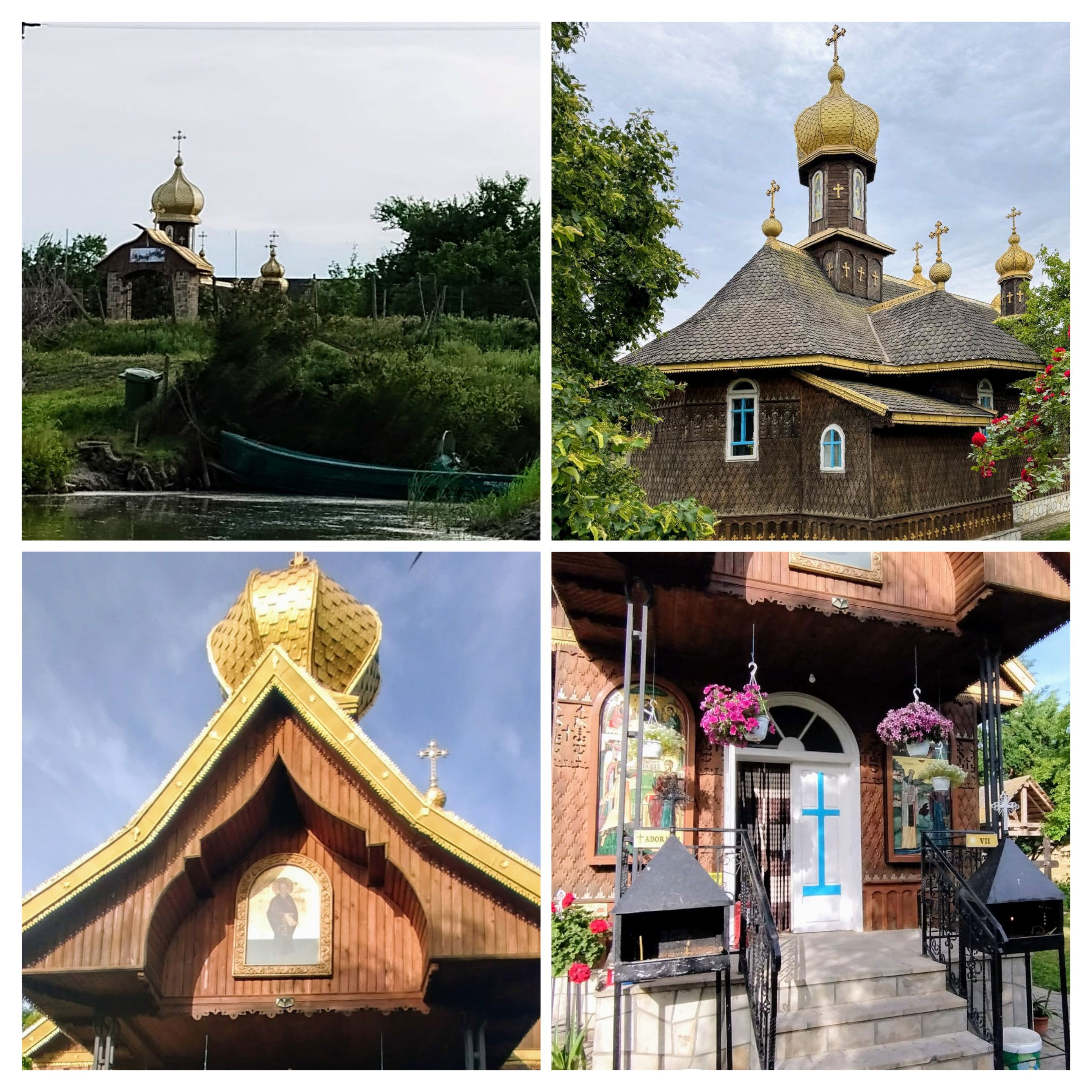
Biserica mănăstirii Stipoc, cu un strop de albastru // The church of the Stipoc Monastery, with a drop of blue
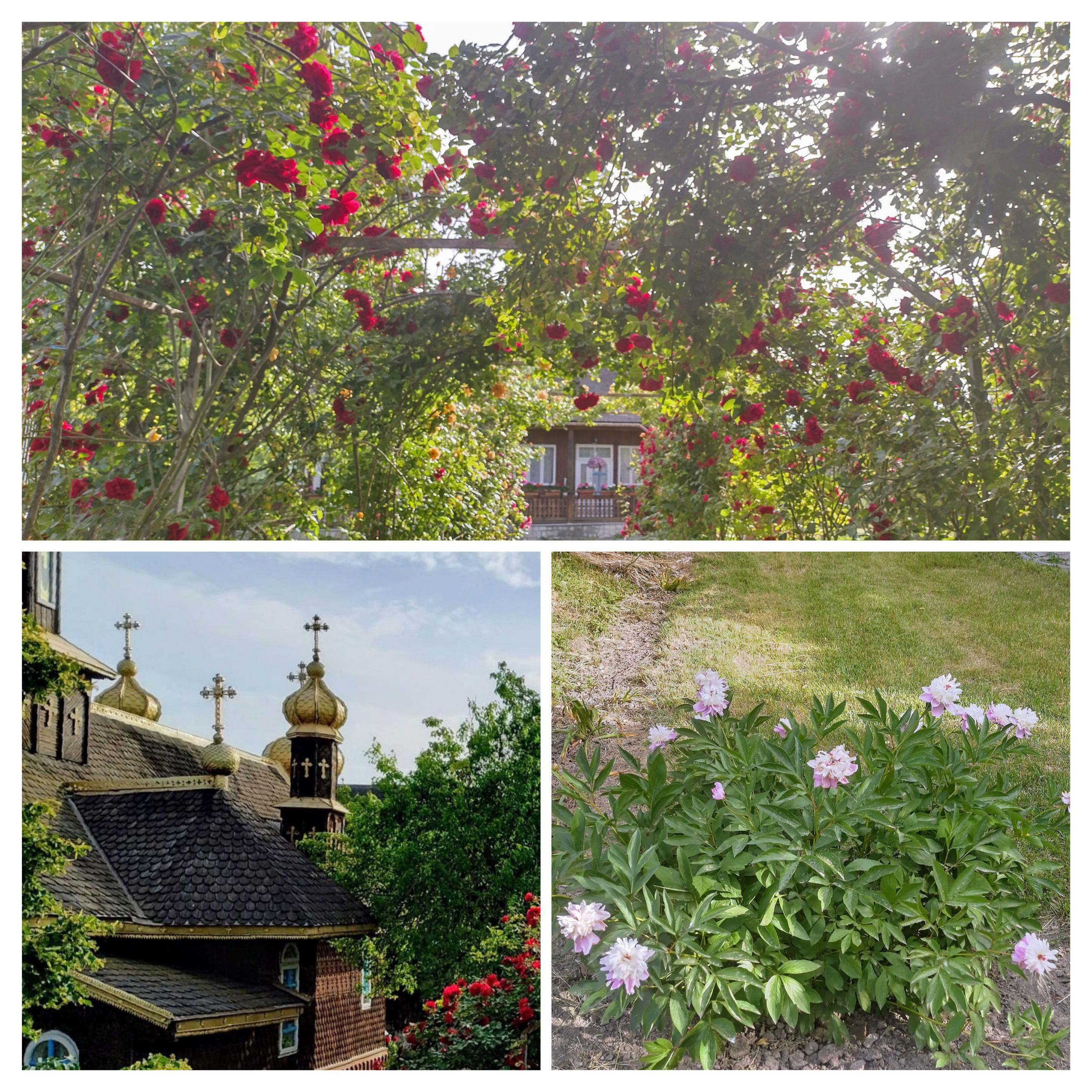
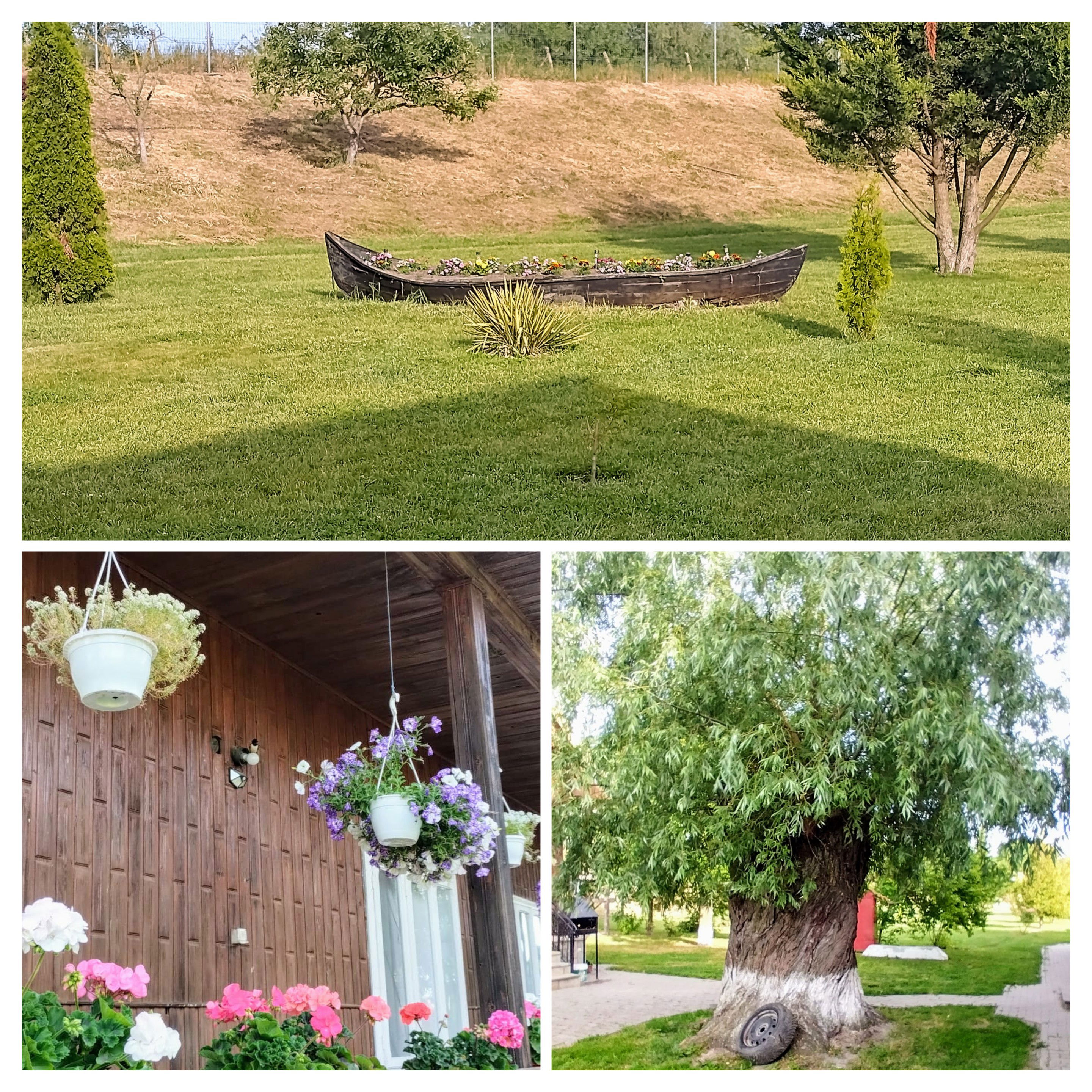
Exteriorul bisericii și grădina // The church's exterior and the garden
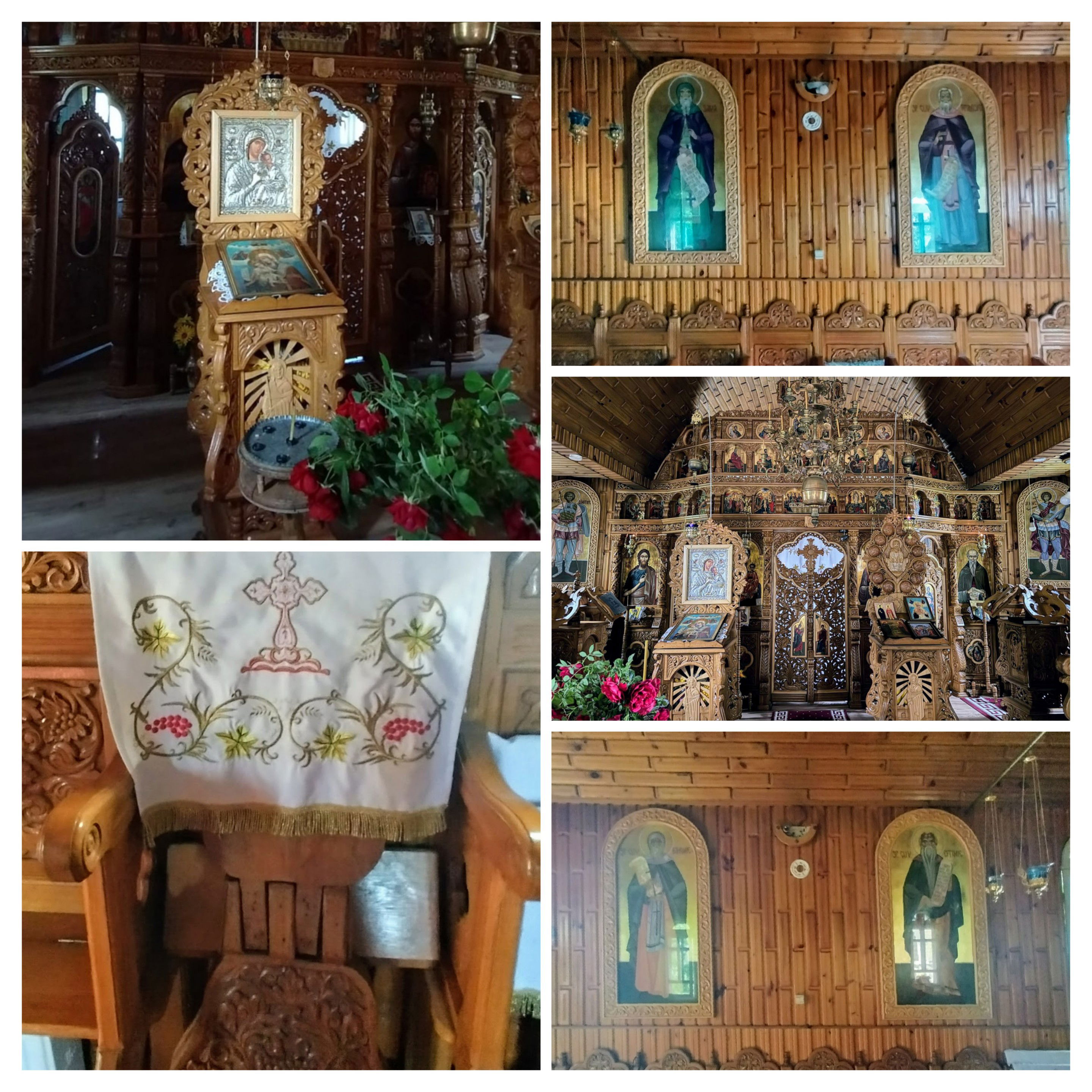
Interiorul bisericii // The church's interior
De pe canalul Stipoc am intrat pe canalul Iacob, spre Mila 23 și, acolo unde acest canal se întâlnește cu canalul Eracle, ne-au așteptat din nou prietenii noștri, pelicanii, într-o adunare mixtă de pelicani comuni, pelicani creți și cormorani.
From the Stipoc Canal, we entered the Iacob Canal towards Mila 23, and where this canal meets the Eracle Canal, our friends, the pelicans, awaited us again, in a mixed gathering of common pelicans, Dalmatian pelicans, and cormorants.
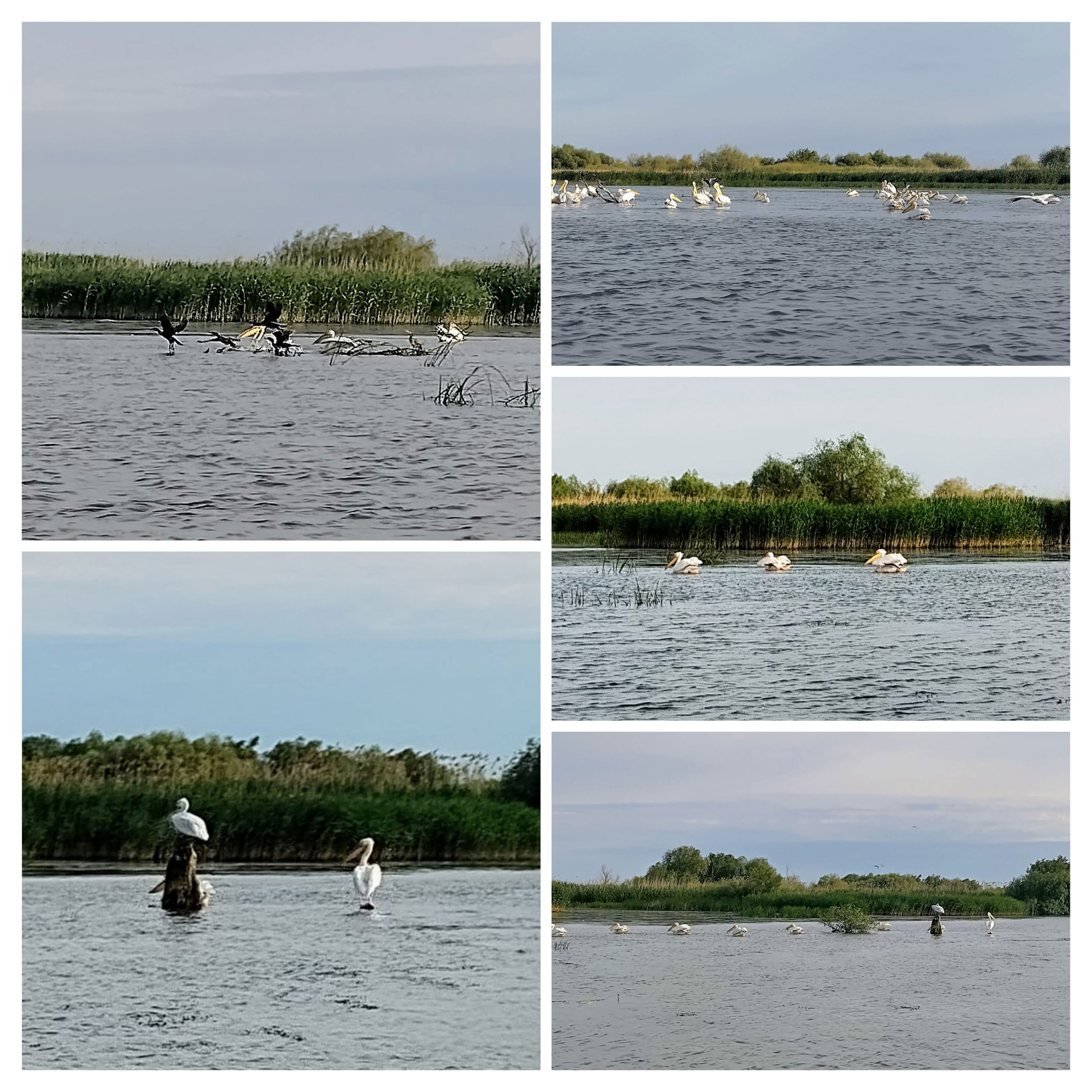
Pe ciot, pelicanul creț (Pelecanus crispus) // On the stump, the Dalmatian pelican (Pelecanus crispus)
Am încheiat, astfel, ziua a 3-a a aventurii noastre în Deltă, iar a doua zi dimineață urmează să plecăm spre Tulcea.
Thus, we concluded the third day of our adventure in the Delta, and the next morning we are set to depart for Tulcea.
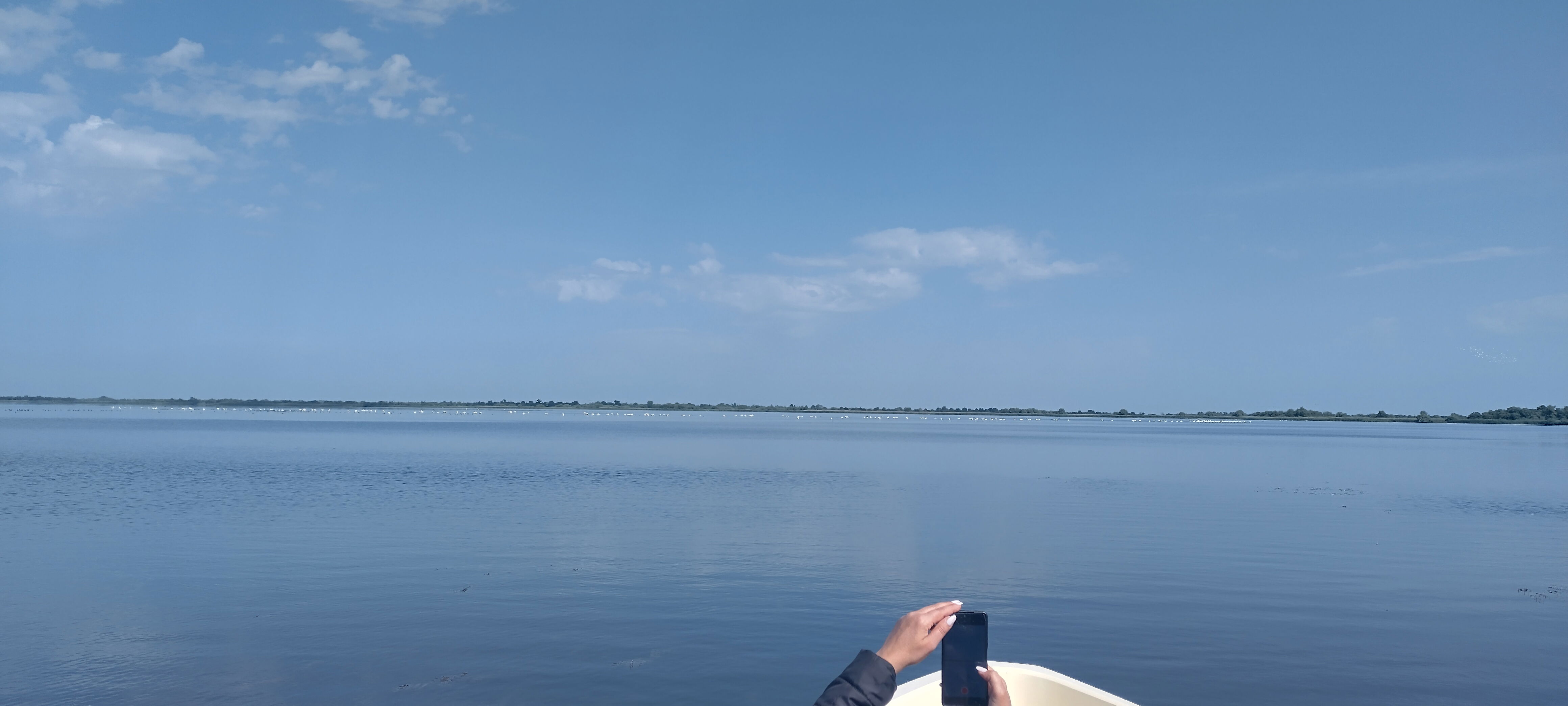
Ziua a 4-a. Traseul înapoi nu este cu mult diferit de cel din ziua întâi, excepție făcând două devieri: pe prima am făcut-o pe lacul Furtuna, pentru a ne lua la revedere de la pelicani, iar a doua a constat în modul de abordare a gârlei Șontea - dacă la venit am ocolit lacul Nebunu prin nord și am traversat lacul Băclăneștii Mari, acum le ocolim pe amândouă prin sud.
Day 4. The route back is not much different from the first day's route, with two exceptions: the first was a detour on Lake Furtuna to say goodbye to the pelicans, and the second involved the way we approached the Șontea Channel - if on the way there we circled around Lake Nebunu from the north and crossed Lake Băclăneștii Mari, now we are circling them both from the south.
Harta are straturi; selectați ziua din colțul din stânga sus // The map has layers; select the day from the upper left corner
Pelicani pe lacul Furtuna // Pelicans on Lake Furtuna
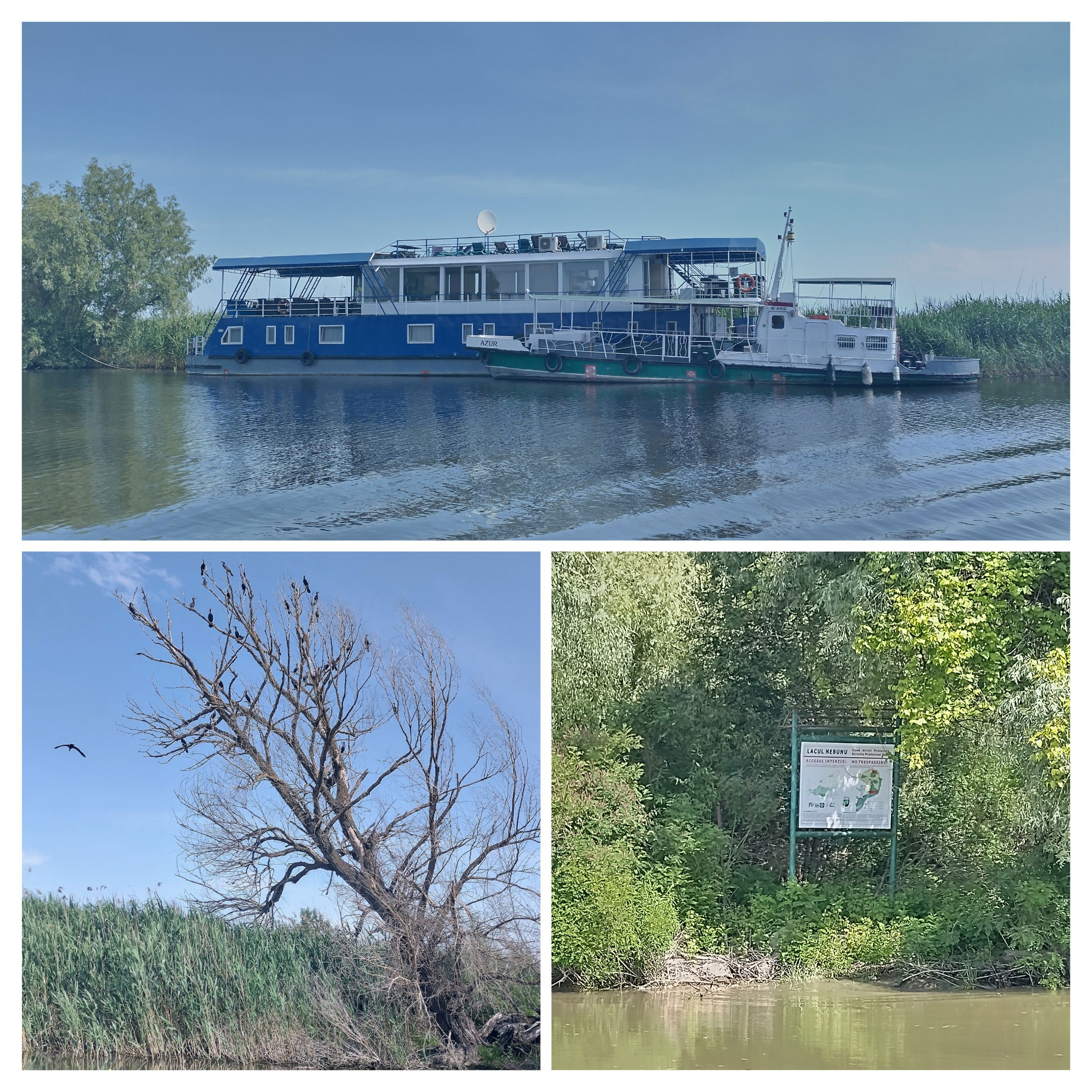
Pe gârla Șontea: ambarcațiune, cormorani și lacul Nebunu // On the Șontea Channel: boat, cormorants and Lake Nebunu
Ajunși în Tulcea, ne-am continuat vacanța încă 2 zile și vă invităm să citiți despre asta pe blog.
Once we arrived in Tulcea, we continued our vacation for another 2 days, and we invite you to read about it on our blog.

- Cost/Durată: toate detaliile pe descoperadeltadunarii.ro
- Verdict: 10/10 - merită absolut!
- Cost/Duration: All details on descoperadeltadunarii.ro
- Verdict: 10/10 - absolutely worth it!





